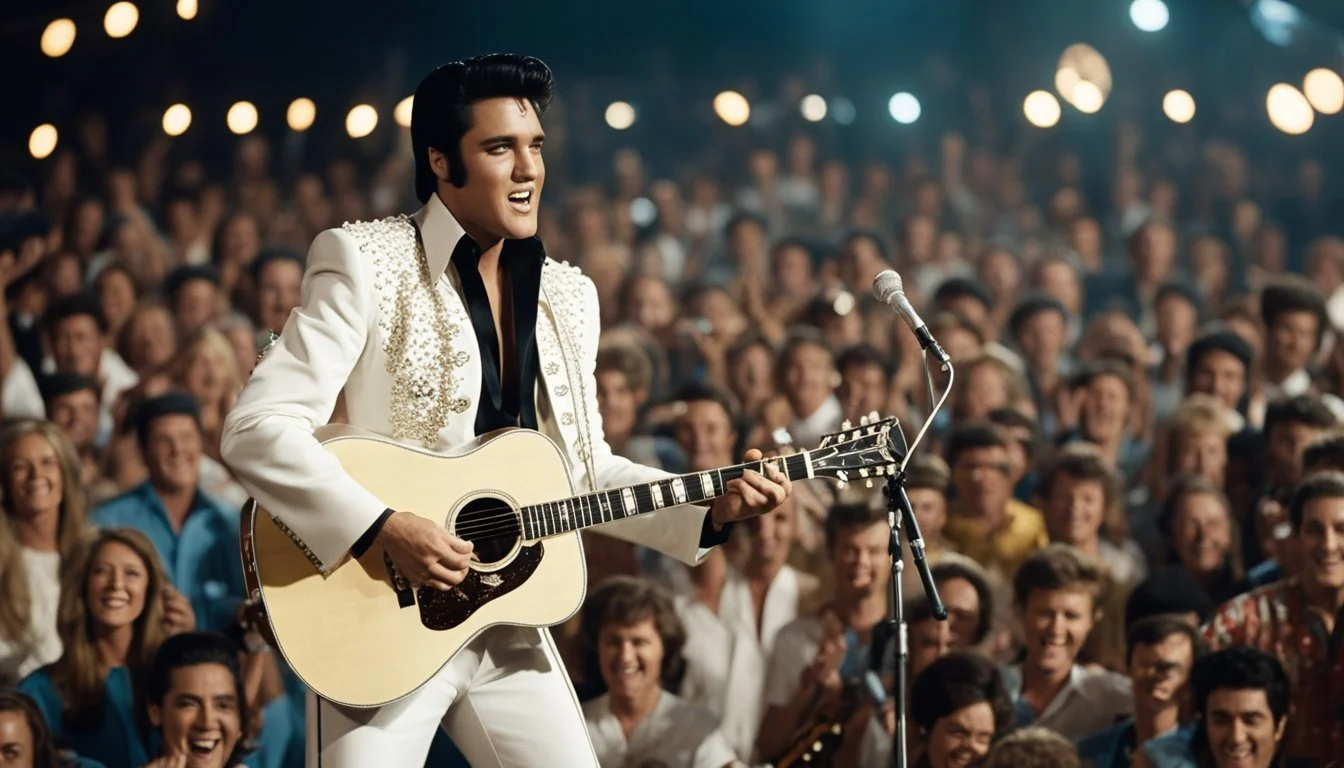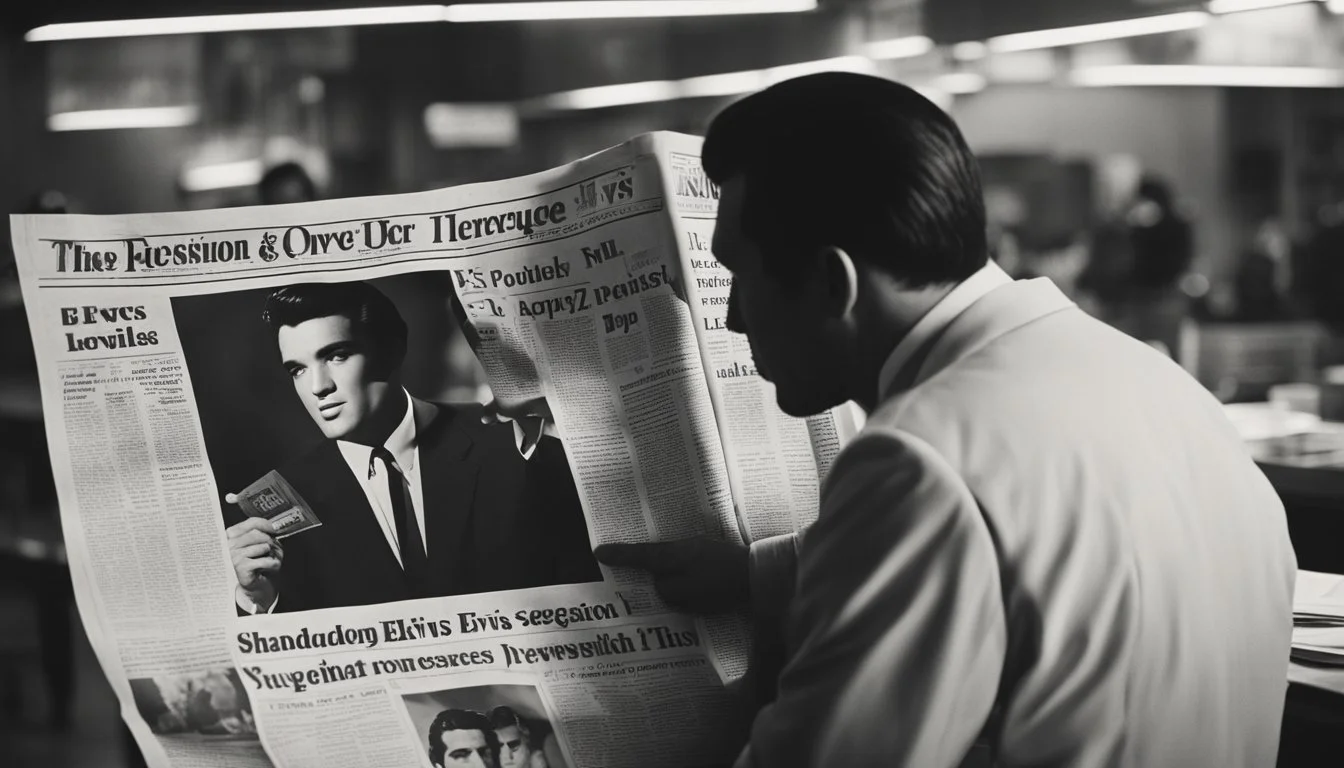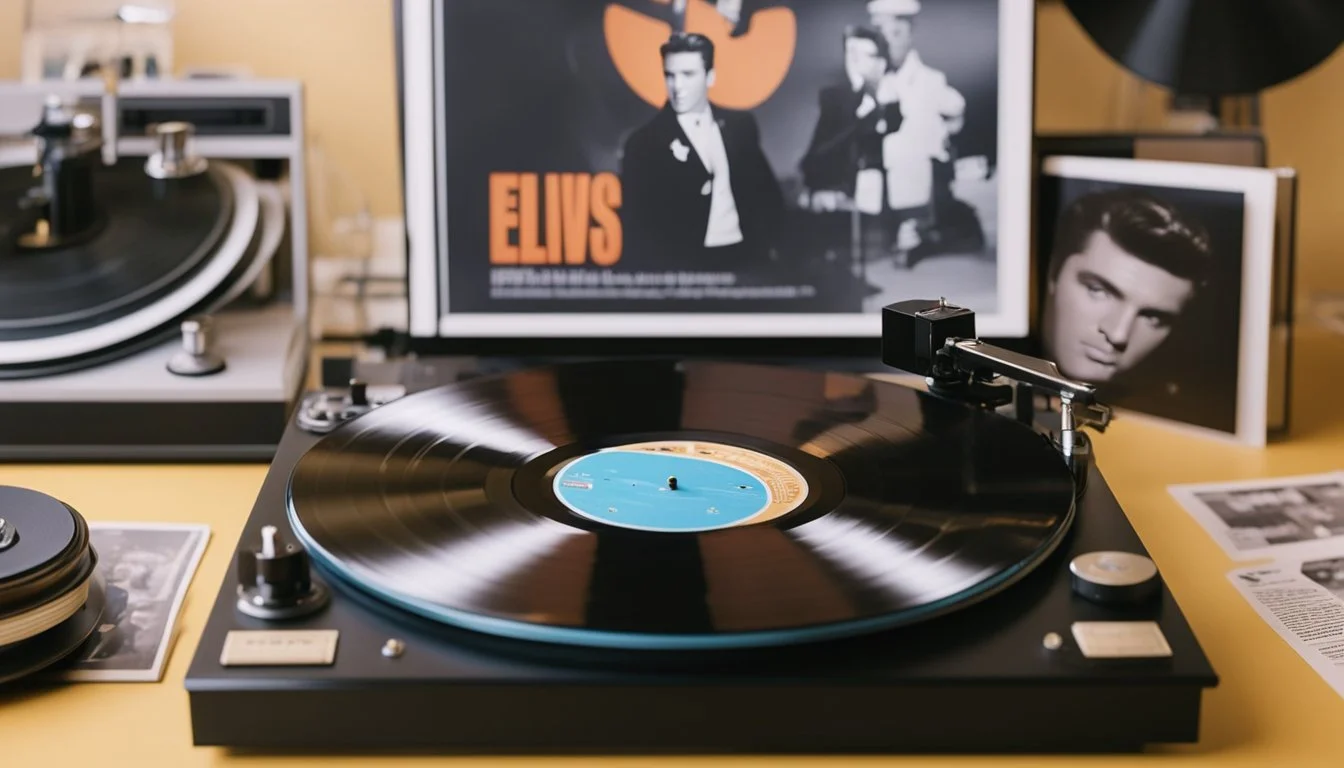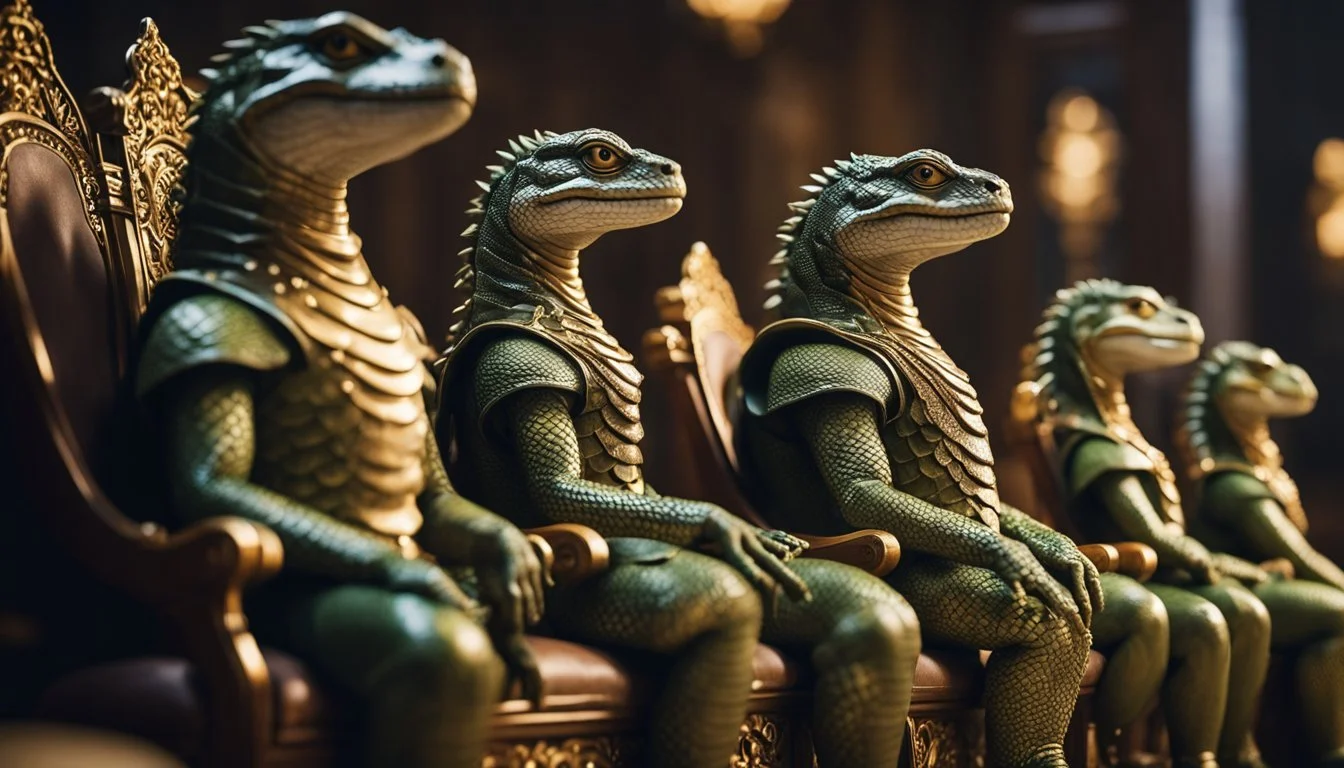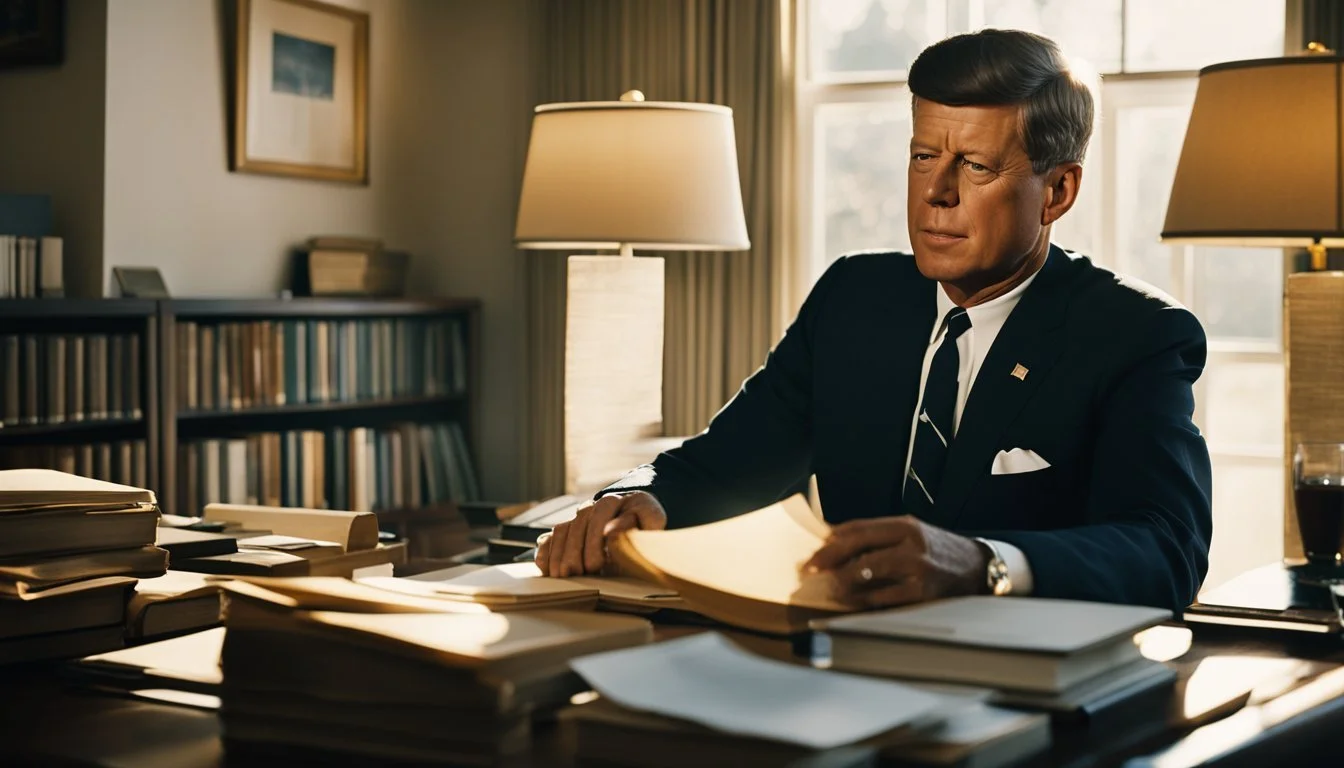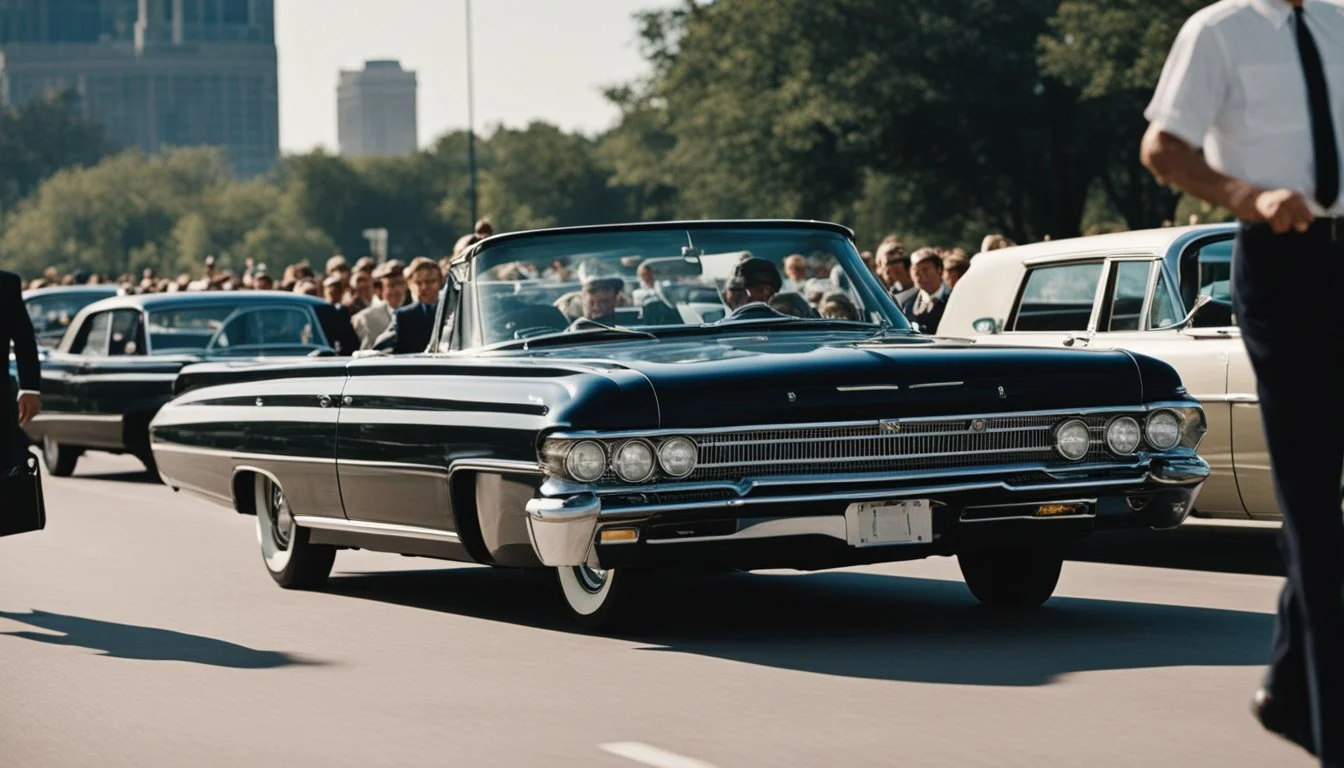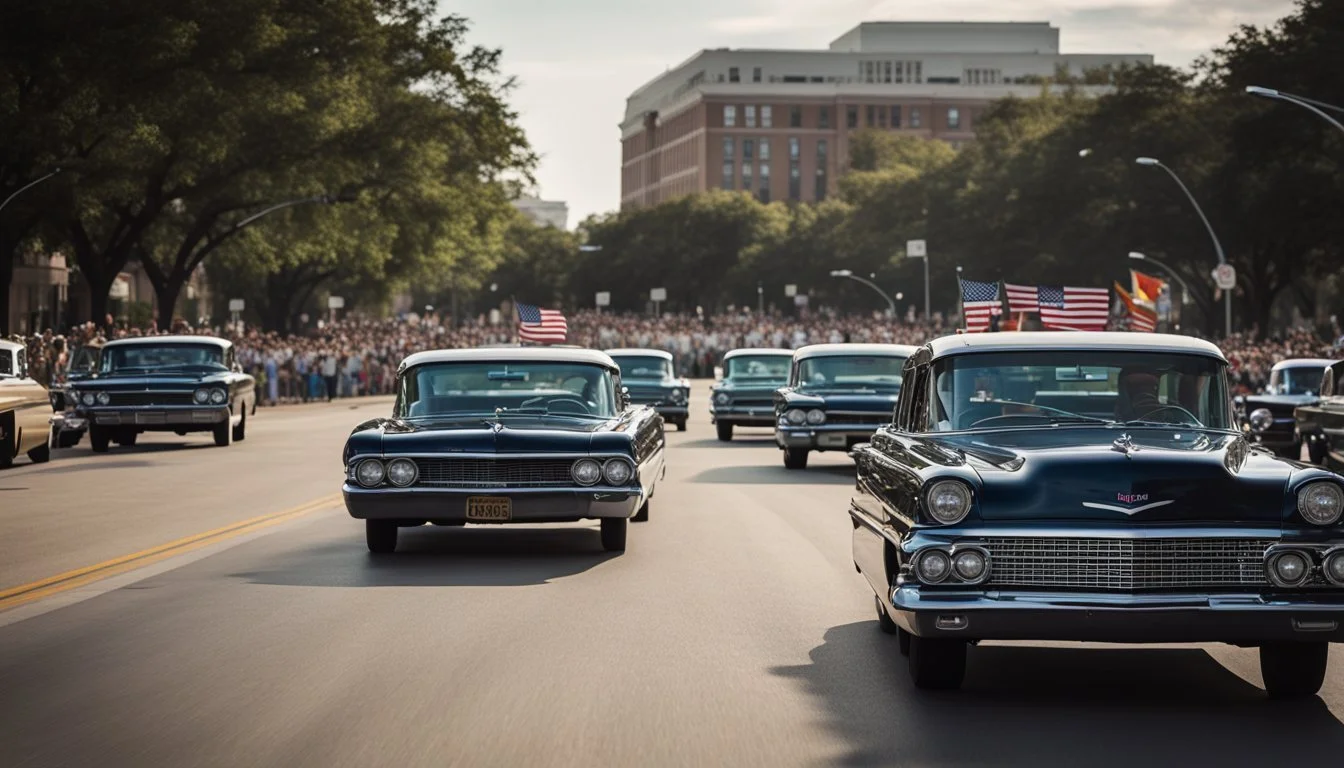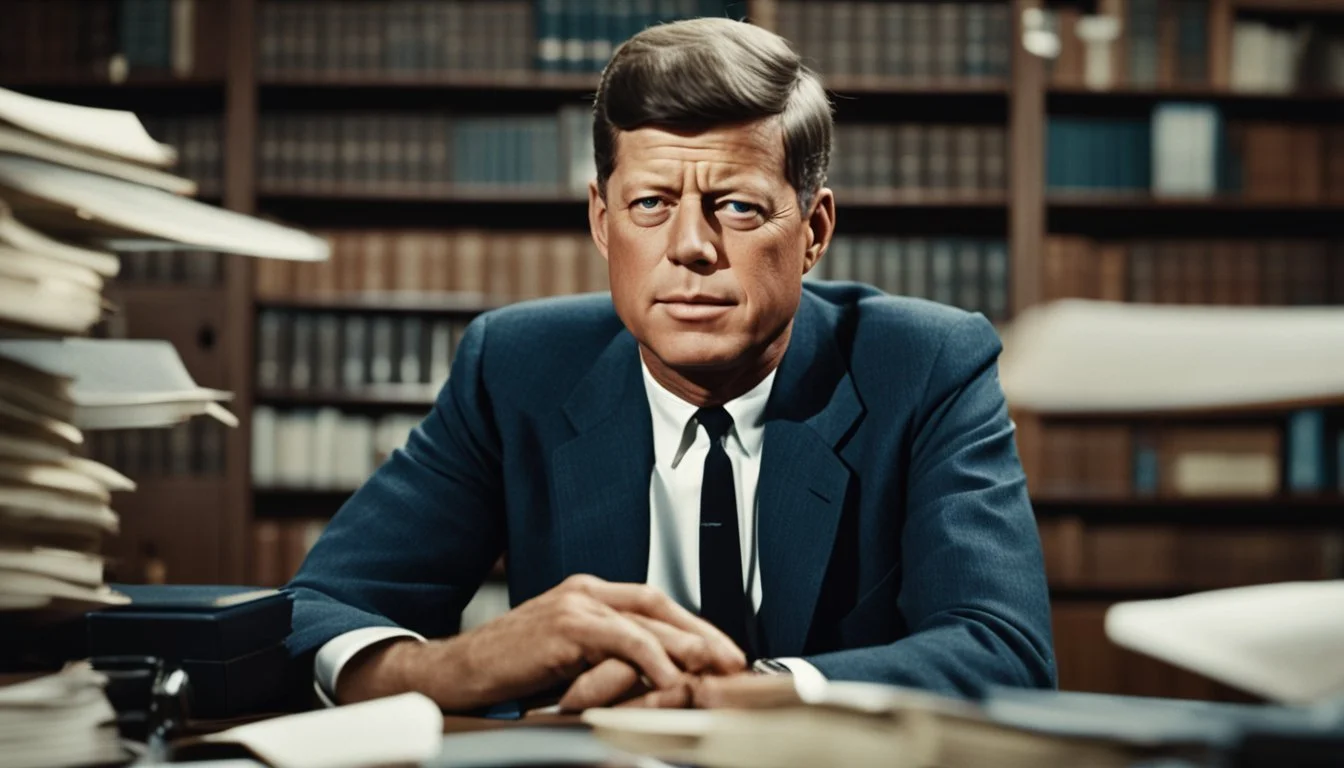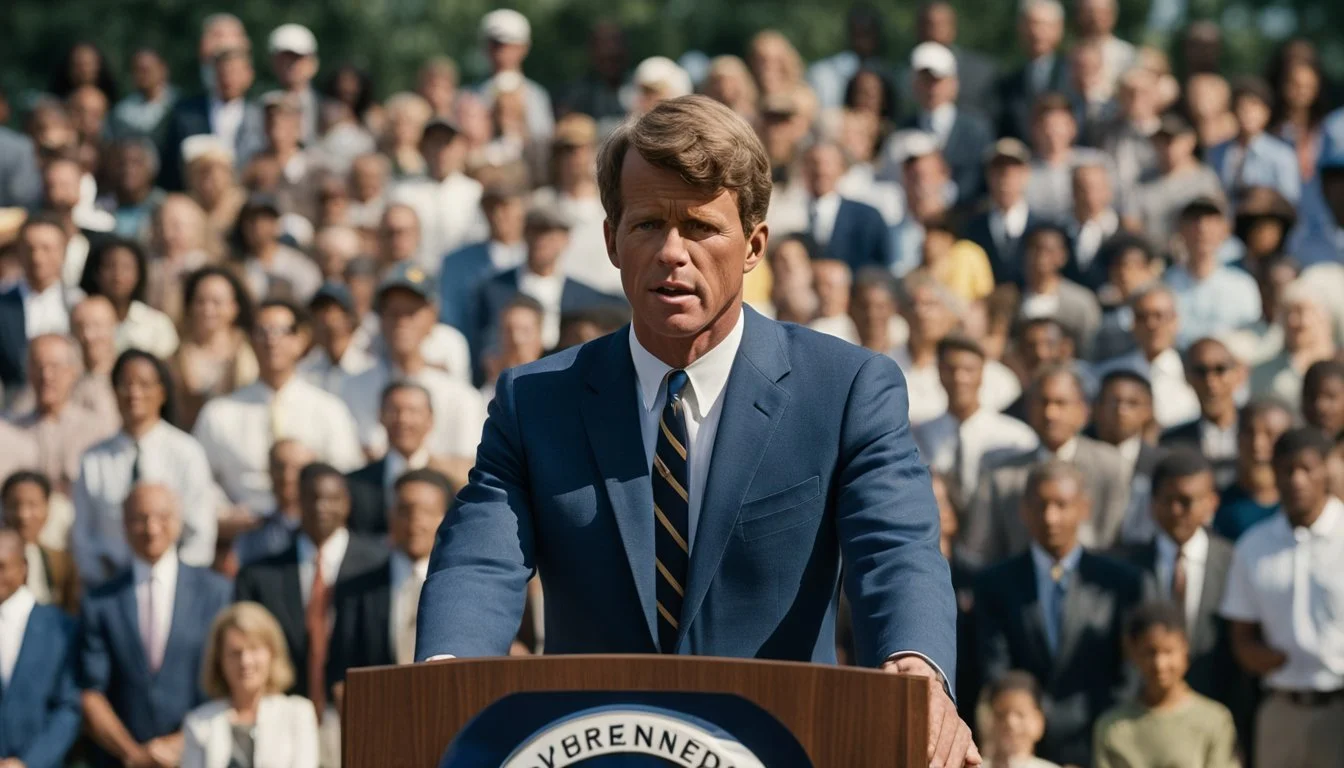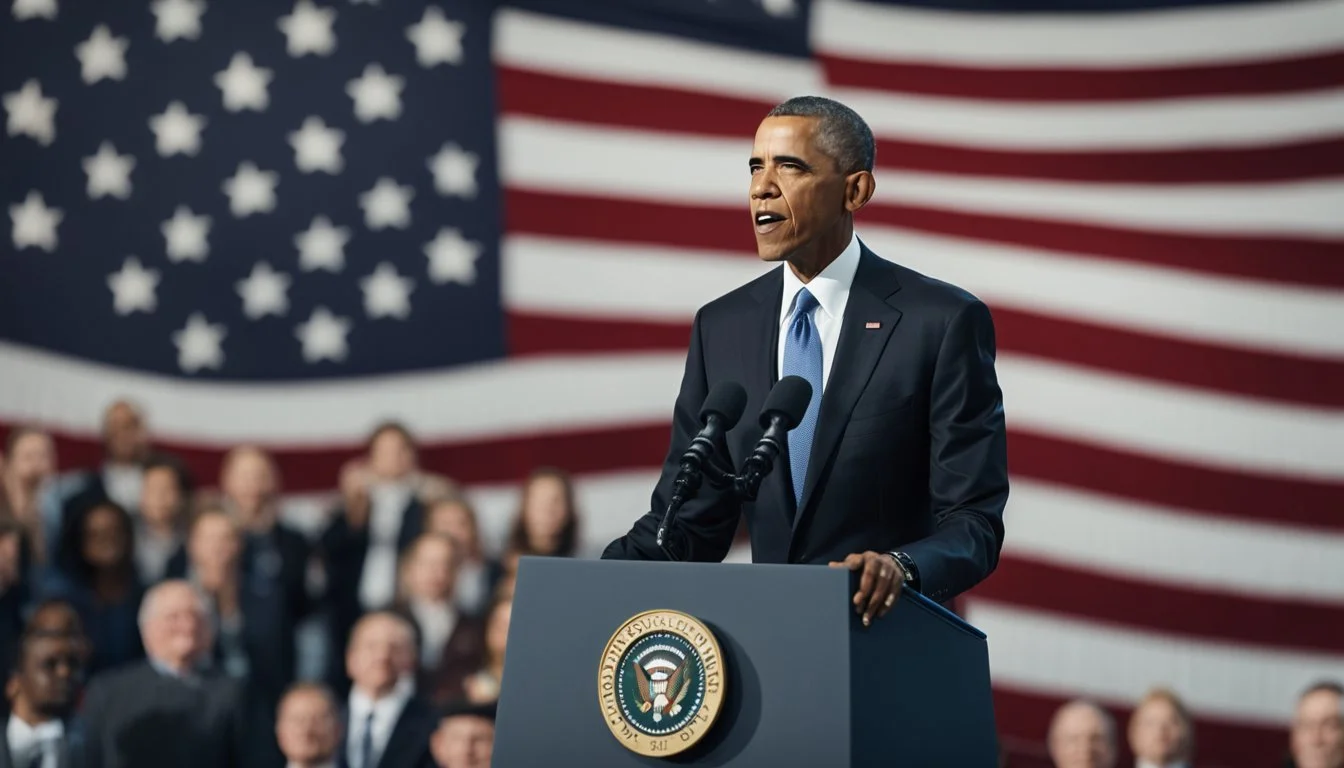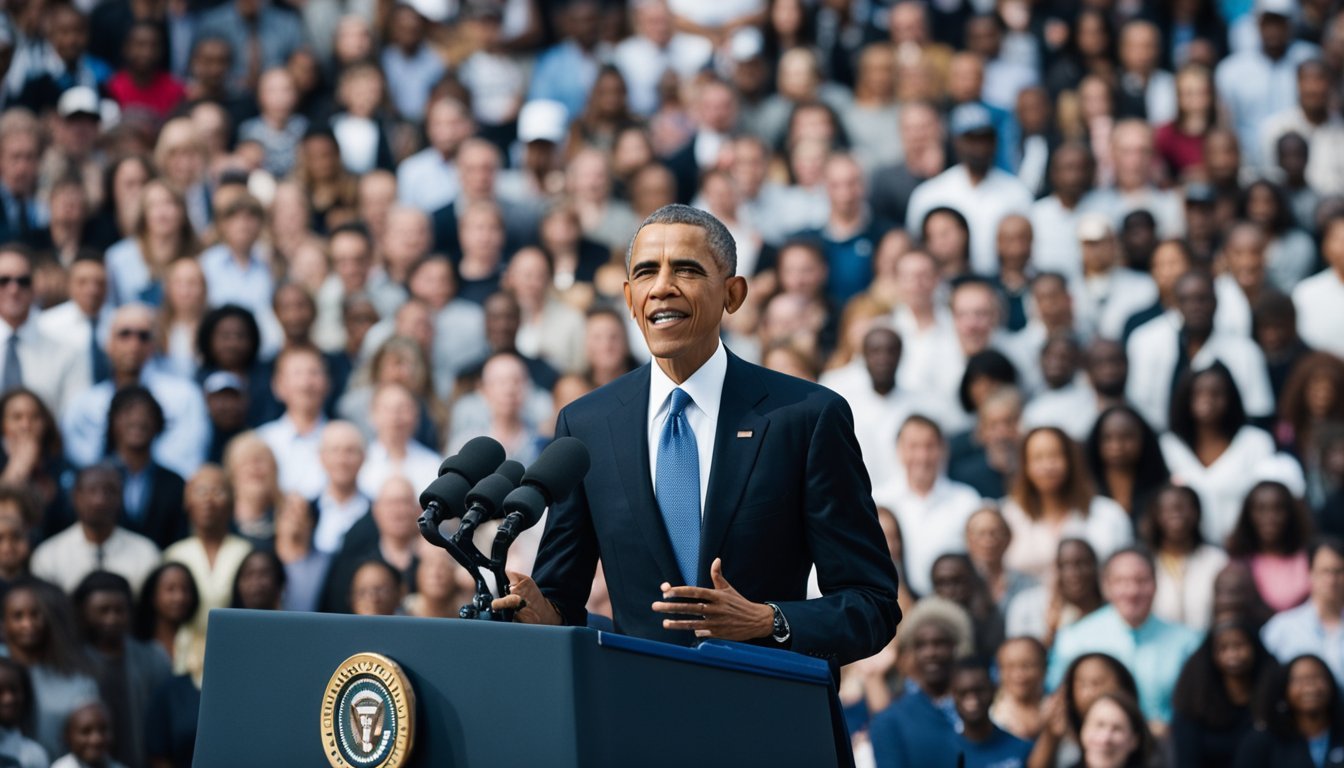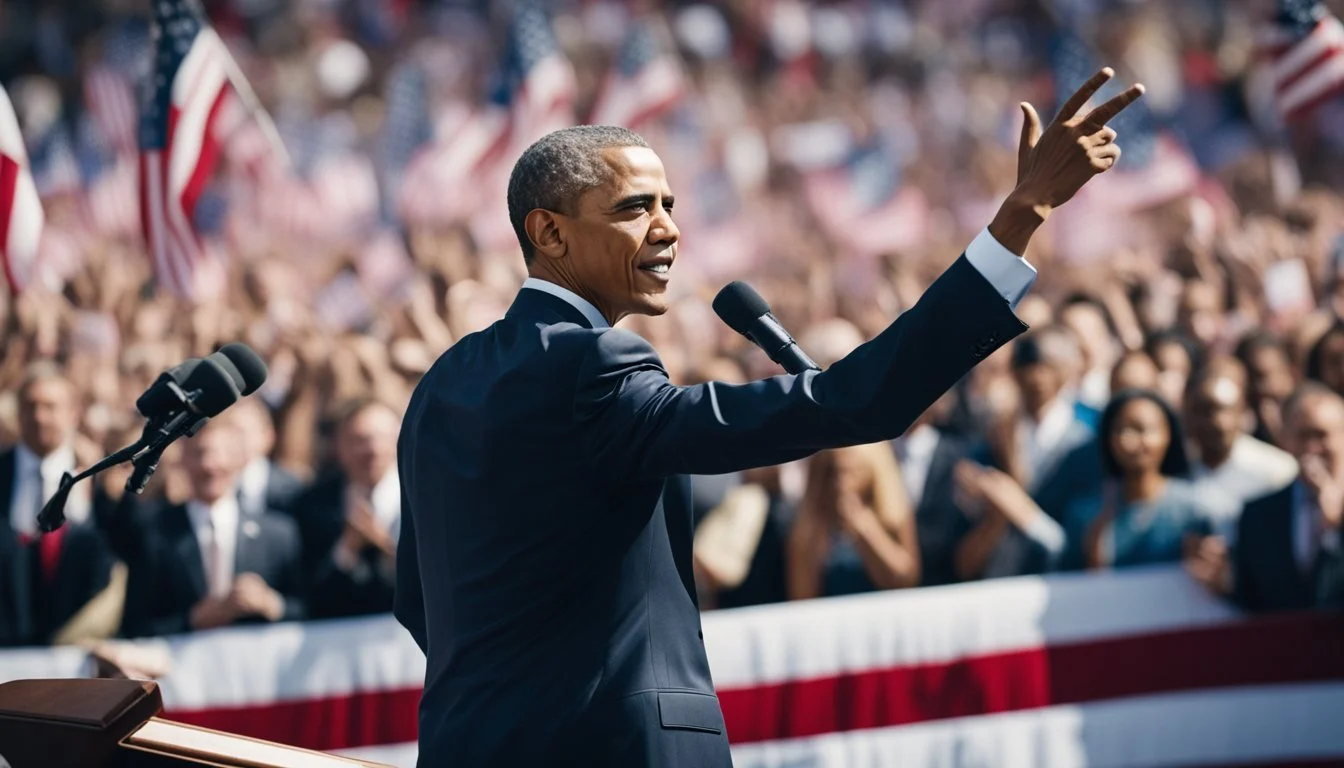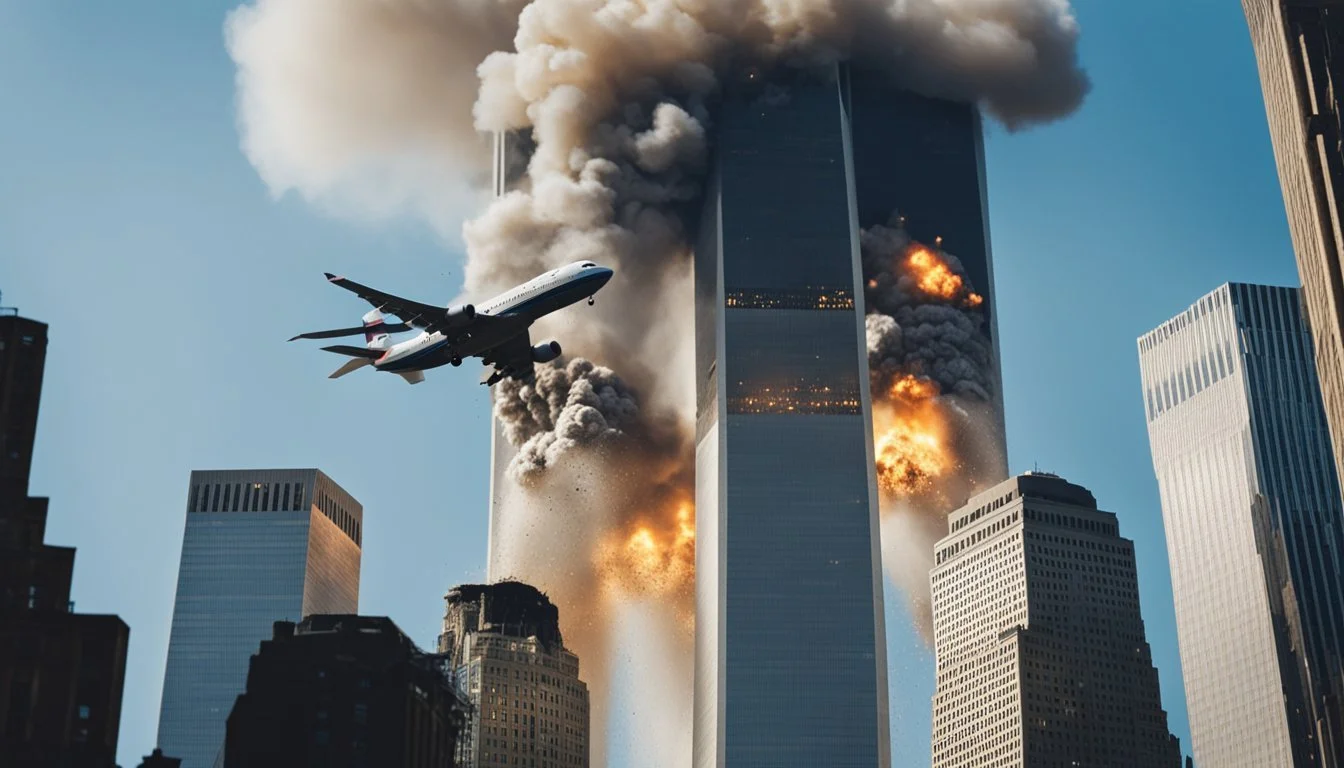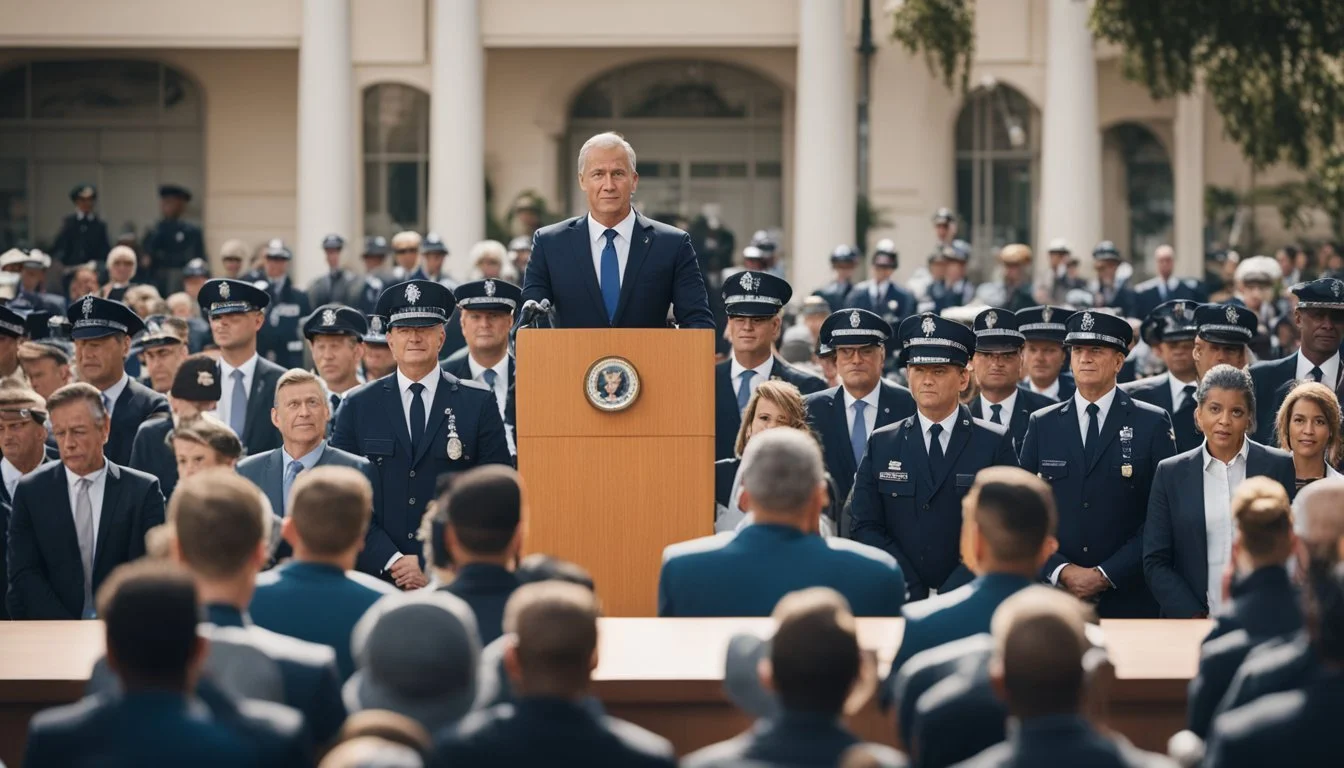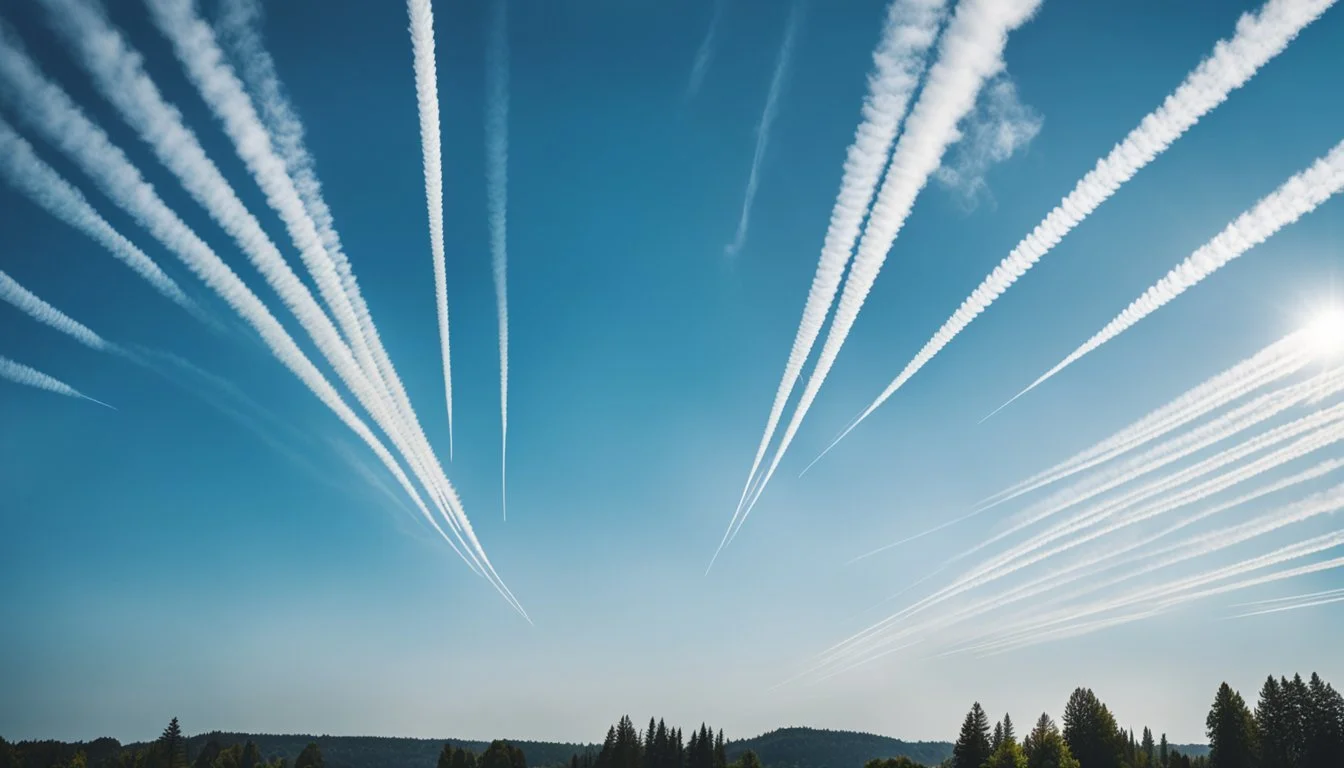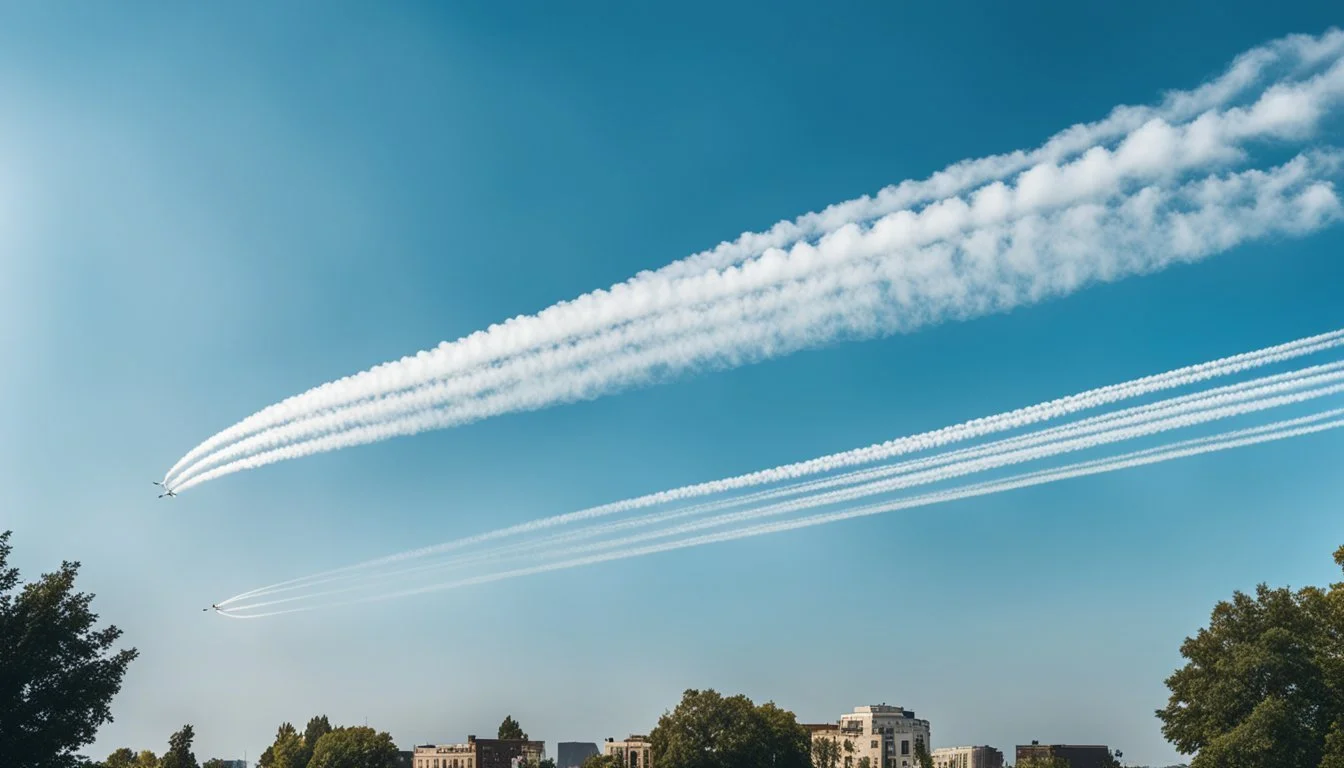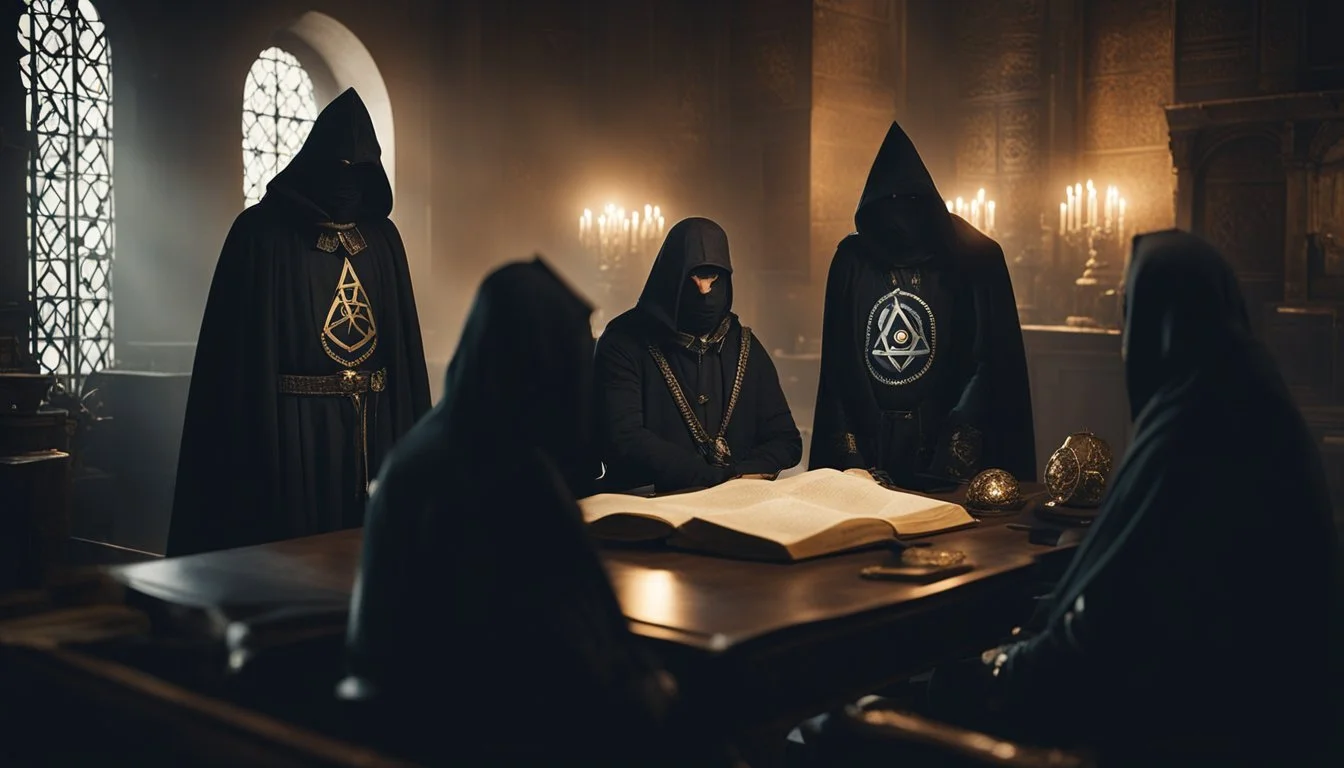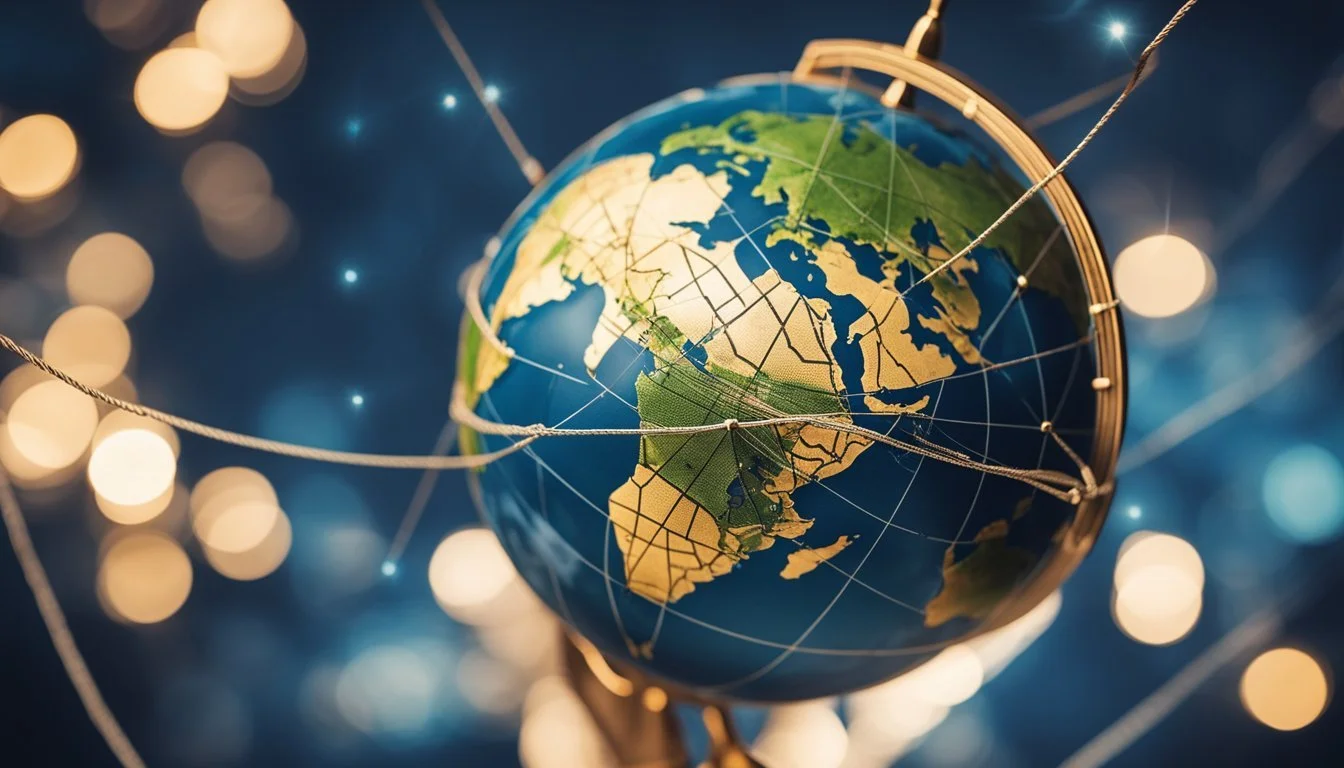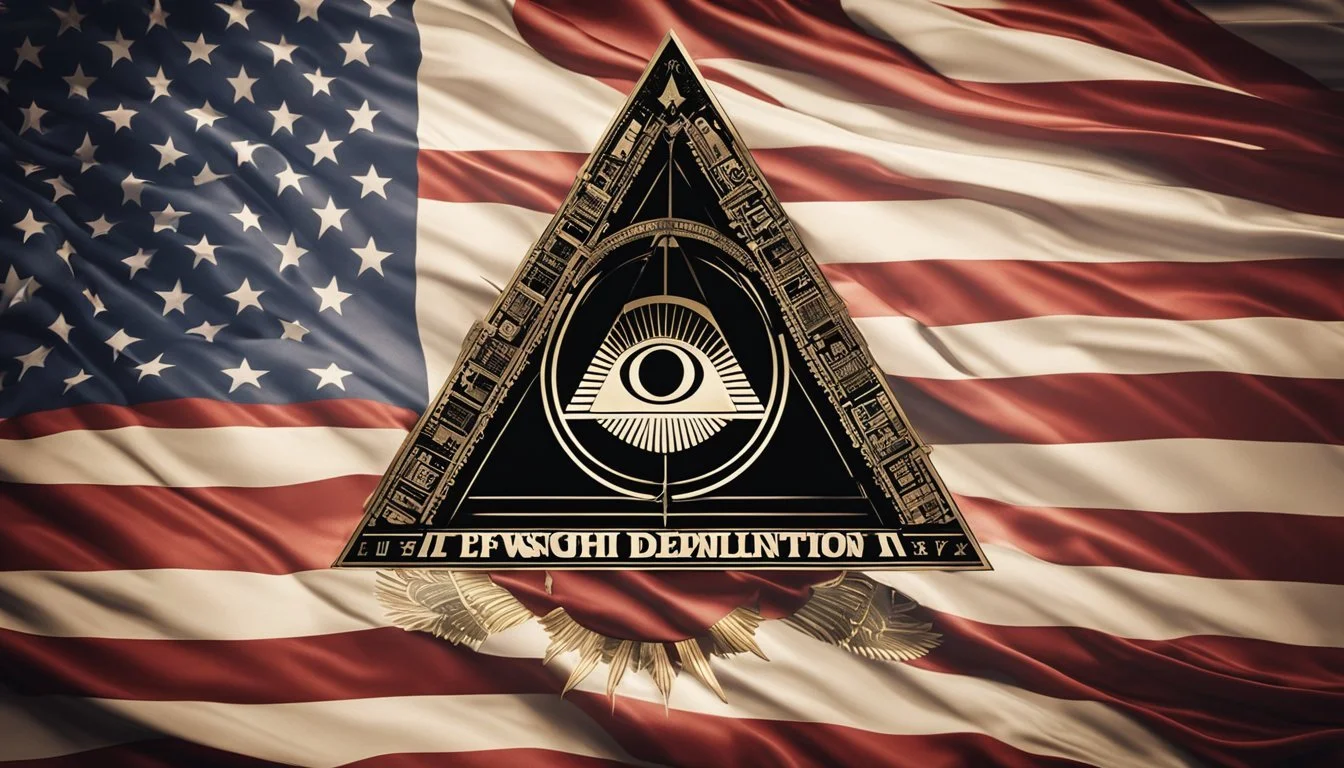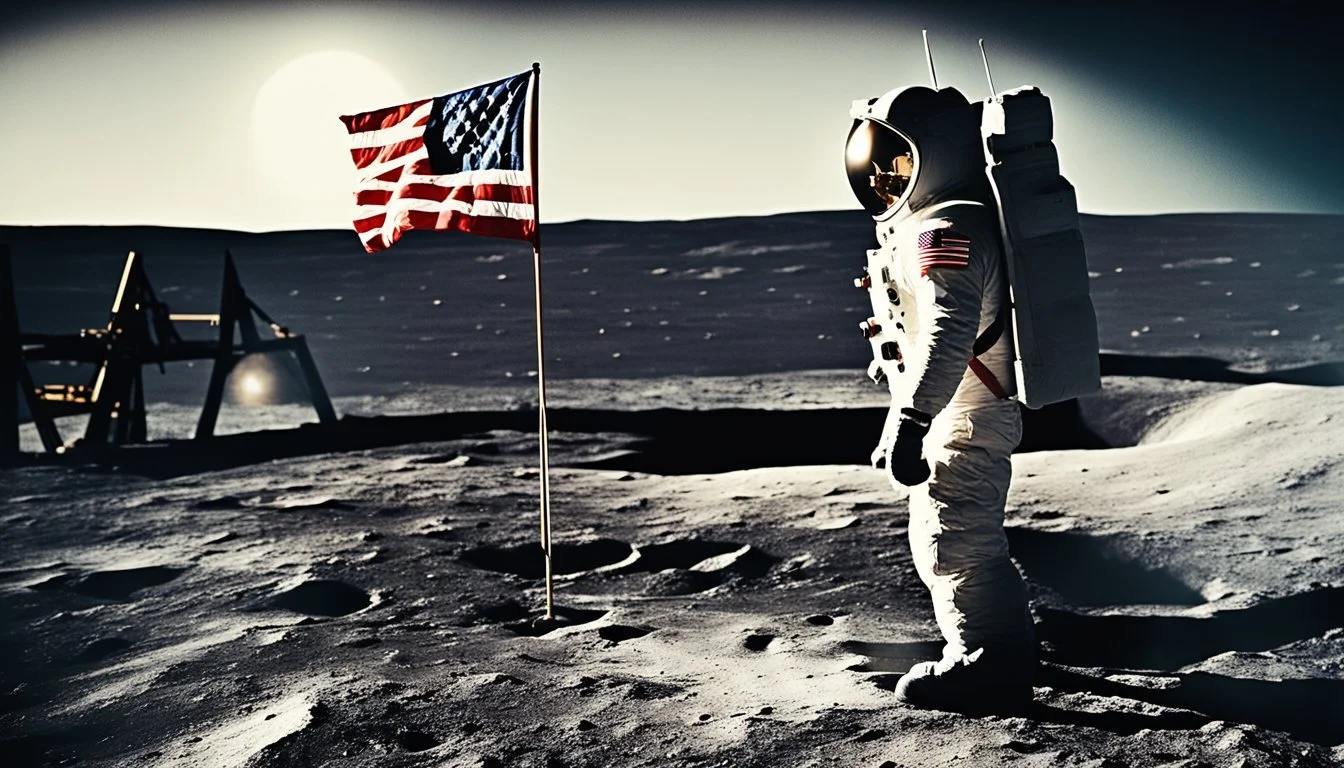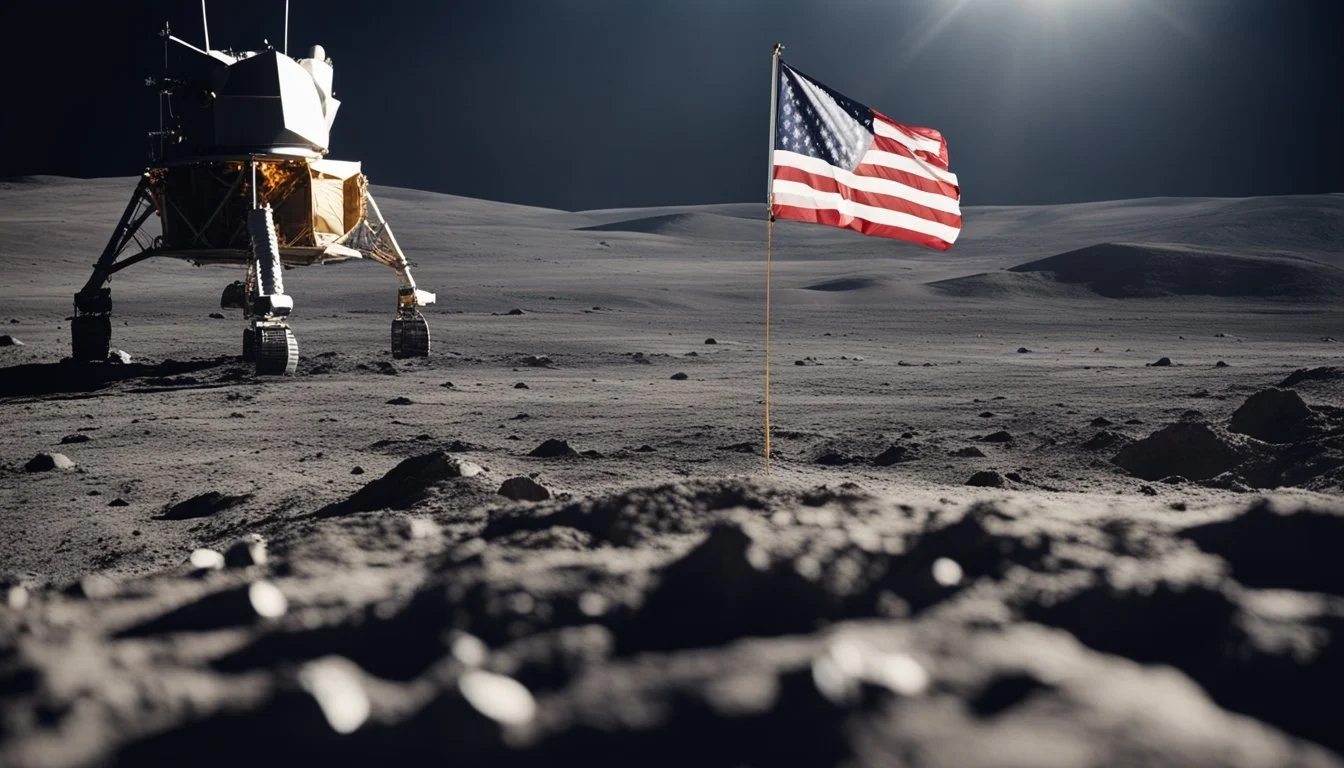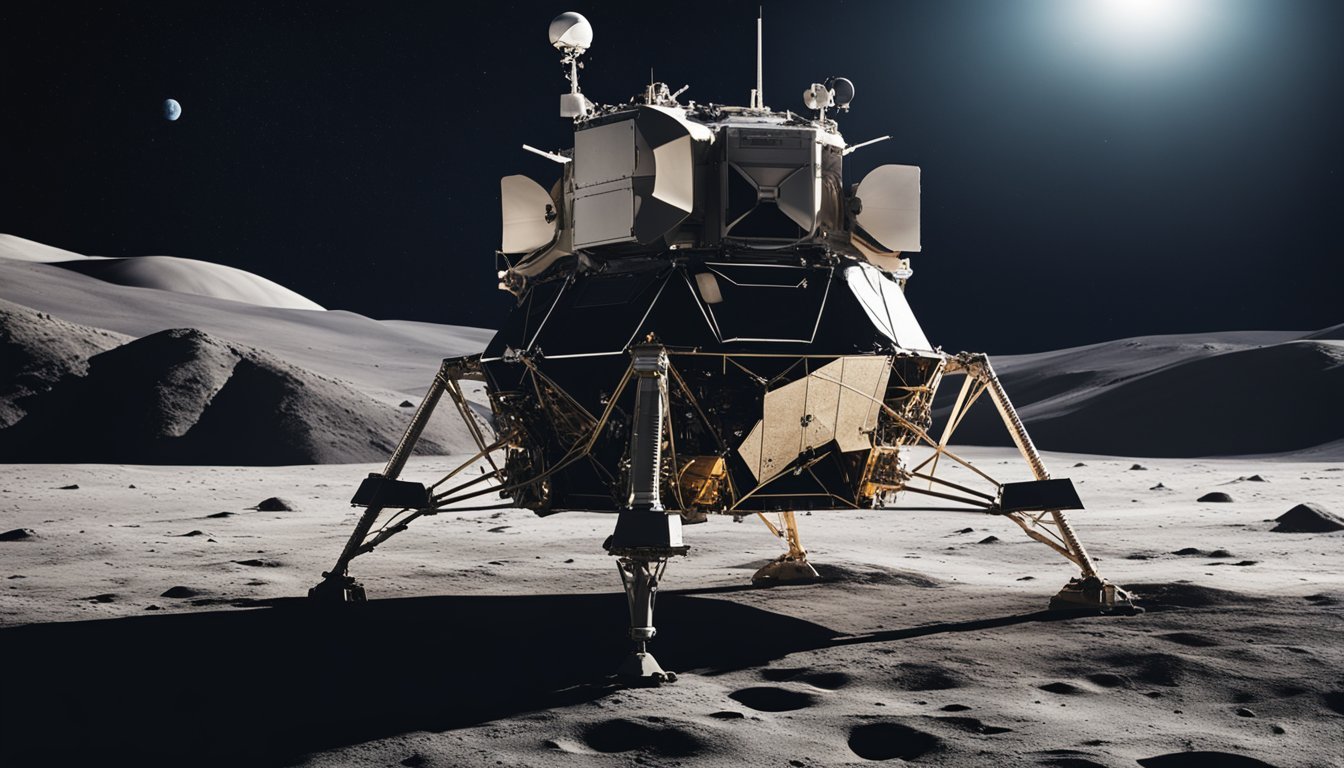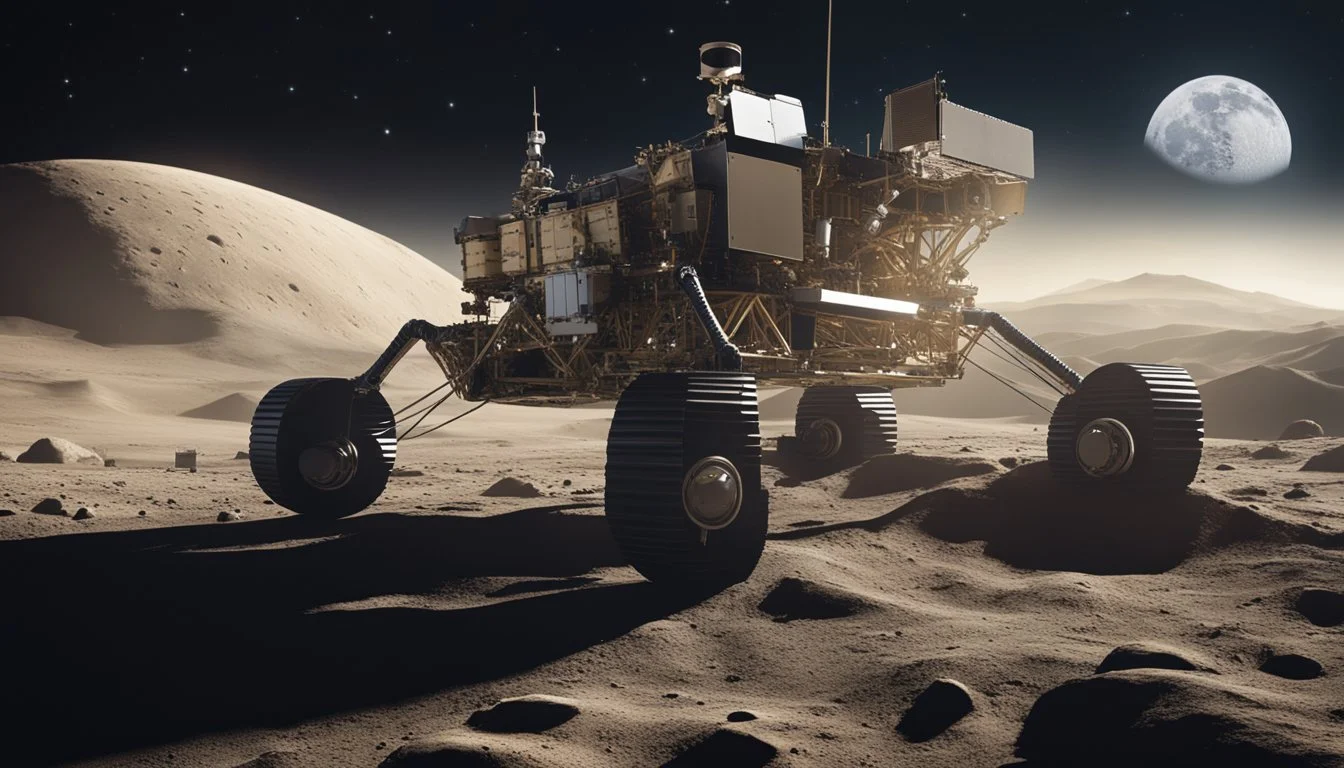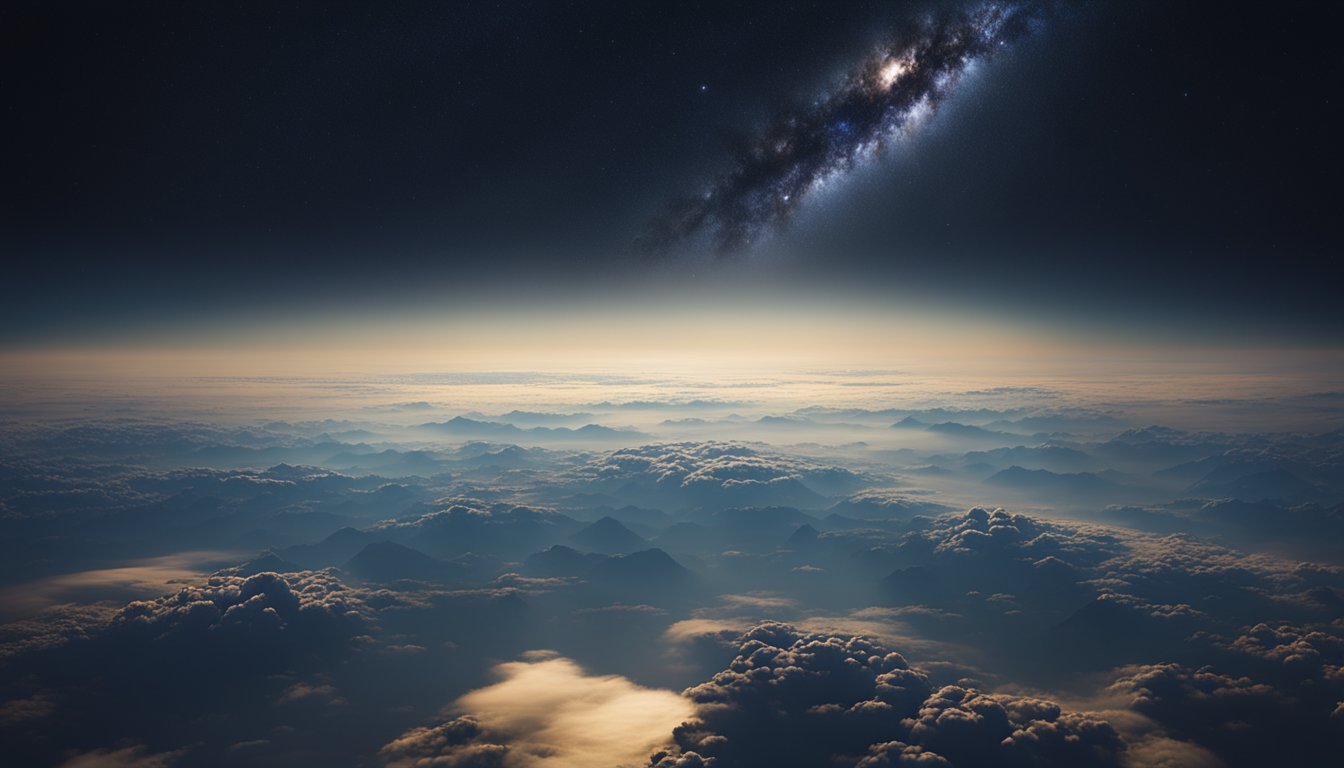The Conspiracy Critic
Ever wondered if Tupac is still alive or if aliens really make crop circles? Welcome to our corner of the internet, where we dive deep into the world of conspiracy theories. Here, we separate fact from fiction, challenge assumptions, and explore the unexplained. Join us as we unravel mysteries and seek the truth together.
Needles and Nanochips: Injecting Truth into the Vaccine Microchip Myth
Explore the truth behind COVID-19 vaccine microchip conspiracy theories. Learn why these claims emerged, how science disproves them, and understand the real technology behind vaccine tracking. Separate fact from fiction in this comprehensive analysis of vaccine safety and public health concerns.
Vaccine microchip implantation has emerged as a controversial topic, sparking intense debate and concern among the public. This conspiracy theory suggests that COVID-19 vaccines contain trackable microchips, allegedly designed to monitor individuals. Extensive fact-checking and scientific evidence have conclusively debunked this claim, confirming that COVID-19 vaccines do not contain microchips.
The origins of this misinformation can be traced to misinterpretations of statements made by public figures and technological advancements in medical tracking. While some companies have developed microchip implants for storing medical information, these are separate from vaccines and not related to COVID-19 immunization efforts.
Health experts and medical professionals consistently emphasize the safety and efficacy of COVID-19 vaccines. They stress the importance of relying on credible sources for vaccine information and encourage the public to consult with healthcare providers for accurate, science-based guidance on vaccination.
Understanding Vaccine Microchip Theories
Vaccine microchip theories gained traction during the COVID-19 pandemic. These false claims spread rapidly on social media platforms, fueled by misinformation and existing distrust in medical institutions.
Origins of Microchip Conspiracy Theories
The idea of microchips in vaccines emerged from a misinterpretation of digital health records. Bill Gates' involvement in vaccine initiatives made him a target of these theories.
Conspiracy theorists falsely linked Gates' support for digital vaccine records to implantable microchips. This notion quickly spread on social media platforms like Facebook.
Roger Stone, a political consultant, amplified these baseless claims, further popularizing the conspiracy theory.
Debunking Myths About Trackable Microchips
There is no evidence to support claims of microchips in vaccines. Vaccines contain only medical ingredients necessary for their effectiveness.
The technology for trackable microchips small enough to fit through a needle does not exist. Vaccine ingredients are thoroughly tested and documented.
A YouGov poll found that 28% of Americans believed the microchip theory, highlighting the need for accurate information. Experts consistently refute these claims, emphasizing vaccine safety and efficacy.
The Role of Social Media in Spread
Social media platforms played a crucial role in disseminating microchip conspiracy theories. Facebook became a primary vector for spreading this misinformation.
The rapid sharing of false information outpaced fact-checking efforts. Echo chambers on social media reinforced these beliefs among certain groups.
Public health officials struggled to counter the spread of misinformation. Some platforms implemented measures to flag or remove false vaccine claims.
Efforts to combat vaccine misinformation continue, with a focus on promoting accurate, science-based information about vaccine safety and efficacy.
Vaccine Development and Safety Checks
Vaccines undergo rigorous testing and monitoring to ensure safety and efficacy. Multiple stages of clinical trials and regulatory reviews precede approval, followed by ongoing surveillance for adverse reactions.
Clinical Trials and Approval Processes
Vaccine development begins with laboratory research and animal studies. If successful, clinical trials follow in three phases:
Phase I: Small group testing for safety and immune response
Phase II: Expanded group testing to refine dosage and assess side effects
Phase III: Large-scale testing to confirm effectiveness and monitor safety
The FDA reviews trial data and manufacturing processes before granting approval. Advisory committees provide independent expert recommendations. Only vaccines meeting strict safety and efficacy criteria receive authorization.
Monitoring Adverse Reactions
Post-approval monitoring continues through:
Vaccine Adverse Event Reporting System (VAERS): CDC and FDA collect reports from healthcare providers and the public
Vaccine Safety Datalink: Analyzes health records for potential safety issues
Clinical Immunization Safety Assessment Project: Conducts research on specific vaccine safety concerns
Manufacturers must report adverse events. The CDC regularly reviews safety data and updates guidelines as needed. This ongoing surveillance helps identify rare side effects not detected in clinical trials.
Technical Aspects of Vaccination
Vaccines utilize advanced scientific principles to provide immunity against diseases. They employ various mechanisms and ingredients to stimulate the body's immune response effectively.
How mRNA Vaccines Work
mRNA vaccines represent a breakthrough in vaccine technology. They contain messenger RNA (mRNA) that instructs human cells to produce a harmless piece of the virus protein. This protein triggers an immune response, teaching the body to recognize and fight the actual virus if exposed.
The mRNA never enters the cell nucleus or alters DNA. Once the mRNA has delivered its instructions, it quickly breaks down and is eliminated from the body. This process mimics natural infection but without causing disease.
Pfizer and Moderna developed mRNA vaccines for COVID-19. These vaccines have proven highly effective in clinical trials and real-world use.
Vaccine Ingredients and Mechanisms
Vaccines contain several key components:
Antigen: The weakened or inactivated pathogen or its parts
Adjuvants: Substances that enhance immune response
Preservatives: Prevent contamination
Stabilizers: Maintain vaccine potency
Traditional vaccines use weakened or inactivated pathogens. Subunit vaccines contain specific parts of the pathogen. Vector vaccines use a harmless virus to deliver genetic instructions.
Each type stimulates the immune system differently. The body produces antibodies and memory cells, providing protection against future infections.
The Myth of Vaccine-Implantable Devices
Claims of microchips in vaccines are unfounded. Vaccine syringes cannot accommodate microchips due to size limitations. The smallest RFID chips measure about 0.05 mm x 0.05 mm, far larger than vaccine needles allow.
Vaccine ingredients are well-documented and do not include any implantable devices. Regulatory agencies closely monitor vaccine production and administration.
The misconception may stem from discussions about digital vaccine records or misunderstandings of vaccine technology. No evidence supports the existence of microchip implantation through vaccination.
Impact of Misconceptions on Public Health
Misinformation about vaccine microchips has significantly affected public health efforts during the COVID-19 pandemic. These false narratives have influenced vaccination rates and placed new responsibilities on technology companies.
Influence on Vaccination Rates
Misconceptions about microchips in vaccines have contributed to vaccine hesitancy. A YouGov poll found that 28% of Americans believed Bill Gates wanted to use vaccines to implant microchips. This belief has led some individuals to delay or refuse vaccination.
Lower vaccination rates can slow the recovery from COVID-19 and increase the spread of the virus. Unvaccinated individuals face higher risks of severe illness and hospitalization.
Public health officials have struggled to combat these false narratives. Education campaigns aim to provide accurate information about vaccine safety and efficacy.
Responsibility of Technology Companies
Technology companies face pressure to address vaccine misinformation on their platforms. Social media sites have become breeding grounds for conspiracy theories about microchipped vaccines.
Companies like Facebook and Twitter have implemented policies to remove false claims about COVID-19 vaccines. They have also promoted authoritative health information to users.
Joan Donovan, a misinformation researcher, emphasizes the need for proactive measures. Tech firms are exploring ways to identify and limit the spread of vaccine myths before they go viral.
Partnerships between tech companies and health organizations have emerged to provide accurate vaccine information. These collaborations aim to build public trust in vaccination efforts.
Philanthropic Work and Public Health
Bill and Melinda Gates have made significant contributions to global health through their foundation. Their efforts have focused on improving access to vaccines and healthcare for vulnerable populations worldwide.
Bill and Melinda Gates' Contributions
The Bill & Melinda Gates Foundation has invested billions of dollars in public health initiatives. They have prioritized disease prevention and vaccine development for conditions like malaria, polio, and HIV/AIDS.
Their work extends to improving sanitation and providing clean water in developing countries. The foundation also supports research into new medical technologies and treatments.
In response to the COVID-19 pandemic, the Gates Foundation pledged substantial funding for vaccine development and distribution efforts. This included support for manufacturing facilities and cold chain logistics.
Global Vaccination Efforts and Initiatives
The Gates Foundation has partnered with governments, NGOs, and pharmaceutical companies to increase vaccine access globally. They have been instrumental in funding the GAVI Alliance, which works to immunize children in low-income countries.
Their initiatives have helped reduce the cost of vaccines for developing nations. The foundation has also supported the development of new vaccine technologies, such as thermostable formulations.
During the COVID-19 pandemic, they advocated for equitable vaccine distribution worldwide. This included backing the COVAX program to ensure vaccine access for lower-income countries.
The foundation's efforts have contributed to significant reductions in childhood mortality rates in many regions. They continue to work towards eliminating diseases like polio through targeted vaccination campaigns.
Fact-Checking and Combating Misinformation
Reliable fact-checking and public education play crucial roles in addressing vaccine misinformation. These efforts aim to provide accurate information and combat false claims circulating online and in communities.
How Fact-Checkers Respond to Vaccine Myths
Fact-checkers systematically evaluate claims about vaccines using scientific evidence. They consult experts, review primary sources, and analyze data to determine accuracy. When addressing microchip myths, fact-checkers point out the lack of evidence for implanted chips in vaccines.
Major news outlets and independent organizations dedicate resources to debunking false vaccine claims. They publish articles explaining why rumors about Bill Gates or government microchipping plans are unfounded.
Fact-checkers emphasize vaccine efficacy data from clinical trials and real-world studies. They clarify that vaccines do not alter DNA or contain tracking devices.
Educational Initiatives and Public Discourse
Health organizations launch campaigns to educate the public about vaccine science. The Centers for Disease Control and Prevention (CDC) provides clear, accessible information on their website and social media.
Public health experts engage in media interviews to address common concerns. They explain vaccine development processes and safety protocols.
Community outreach programs target areas with low vaccination rates. These initiatives foster dialogue and answer questions from vaccine-hesitant individuals.
Online courses and webinars offer in-depth learning about immunology and vaccine technology. These resources help people understand how vaccines work and why they're safe.
Heartbreak Hotel or Hideout Haven? Unmasking the King's Alleged Afterlife
Explore the truth behind Elvis Presley's death and why some fans believe he's still alive. Learn how official records debunk conspiracy theories about the King's alleged survival and hideout.
Elvis Presley's death on August 16, 1977, shocked the world. Yet decades later, some fans cling to the belief that the King of Rock and Roll faked his own demise.
Despite numerous conspiracy theories, there is no credible evidence that Elvis Presley is still alive. The singer's death was thoroughly documented and investigated by medical professionals and law enforcement.
Theories about Elvis's survival persist due to a combination of grief, denial, and the allure of a good mystery. Some claim he entered witness protection, while others insist on alleged sightings. These ideas, while creative, lack substantiation and ignore the well-established facts surrounding his passing.
Exploring the Legend of Elvis Presley
Elvis Presley's meteoric rise to fame and enduring cultural impact cemented his status as the "King of Rock and Roll." His unique blend of musical styles and charismatic performances revolutionized popular music and entertainment in the mid-20th century.
Early Life and Rise to Fame
Elvis Aaron Presley was born on January 8, 1935, in Tupelo, Mississippi. He grew up in a modest household and developed a passion for music at a young age. In 1954, Elvis recorded his first single, "That's All Right," at Sun Records in Memphis, Tennessee. This marked the beginning of his rapid ascent to stardom.
His distinctive voice, energetic stage presence, and fusion of country, R&B, and gospel styles quickly captivated audiences. Elvis's early hits like "Heartbreak Hotel" and "Hound Dog" propelled him to national fame. By 1956, he had become a household name, appearing on popular television shows and starring in his first film, "Love Me Tender."
Military Service and Acting Career
In 1958, at the height of his popularity, Elvis was drafted into the U.S. Army. He served for two years, including a stint in Germany. Despite concerns about the impact on his career, Elvis's time in the military only enhanced his public image.
Upon returning to civilian life in 1960, Elvis resumed his music and film career with renewed vigor. He starred in numerous movies throughout the 1960s, including "Blue Hawaii" and "Viva Las Vegas." While these films were commercially successful, they received mixed critical reception.
The Las Vegas Residency and Decline
In 1969, Elvis began a series of concerts at the International Hotel in Las Vegas. These performances marked a significant comeback for the singer, showcasing his enduring talent and appeal. His jumpsuit-clad stage persona became iconic during this period.
However, the demanding schedule and lifestyle took a toll on Elvis's health. He struggled with prescription drug dependency and weight gain. Despite these challenges, he continued to tour and perform throughout the early 1970s.
Elvis's final years were marked by declining health and erratic behavior. On August 16, 1977, he suffered a fatal heart attack at his Graceland mansion in Memphis, Tennessee. He was 42 years old. Elvis's untimely death shocked the world and solidified his legendary status in music history.
The Death of a Superstar
Elvis Presley's death on August 16, 1977 shocked the world and marked the end of an era in music history. The sudden loss of the King of Rock and Roll at age 42 left an indelible impact on popular culture.
Announcement and Public Reaction
Elvis was found unresponsive on his bathroom floor at Graceland. His personal physician pronounced him dead at 3:30 PM. The news spread rapidly, stunning fans worldwide.
Memphis was flooded with mourners. Radio stations played Elvis songs non-stop. President Carter praised Elvis as a "symbol of America's vitality, rebelliousness, and good humor."
Many fans refused to believe Elvis had died. Sightings were reported for years after. Some claimed the death certificate was fake or that Elvis entered witness protection.
Funeral and Memorials
Elvis's funeral was held on August 18, 1977 at Graceland. Over 80,000 people lined the processional route to Forest Hill Cemetery.
The casket was placed in the foyer of Graceland for public viewing. An estimated 30,000 fans passed by to pay respects.
Elvis was initially buried next to his mother at Forest Hill. Security concerns led to both being moved to Graceland's Meditation Garden. The grave became a permanent memorial and pilgrimage site for fans.
Impact on Music and Pop Culture
Elvis's death cemented his legendary status. Album sales skyrocketed. Graceland became a major tourist attraction, drawing over 600,000 visitors annually.
Elvis impersonators multiplied, keeping his image and music alive. Films, books and conspiracy theories about his death emerged.
His influence lived on in countless musicians. "Heartbreak Hotel" and other hits remained pop culture touchstones. Elvis posthumously entered the Rock and Roll, Country Music, and Gospel Music Halls of Fame.
Annual memorial events at Graceland, including candlelight vigils, continue to draw thousands of devoted fans decades after his passing.
Conspiracy Theories and Speculations
Elvis Presley's death sparked numerous conspiracy theories and speculations. Devoted fans have claimed sightings of the King long after his reported passing, while others believe he orchestrated an elaborate scheme to fake his own death.
Alleged Sightings of Elvis
Some fans insist they've spotted Elvis in various locations years after his death. Notable alleged sightings include:
A bearded man in the background of a scene from the 1990 film "Home Alone"
Kalamazoo, Michigan, where Elvis was supposedly working as a groundskeeper
Buenos Aires, Argentina, where he was rumored to be living under an assumed name
The Elvis Sighting Society has documented many of these claims. However, no credible evidence supports these sightings.
Theories of Faking His Own Death
Several theories suggest Elvis faked his death for various reasons:
To escape the pressures of fame
To enter witness protection due to mafia connections
As part of an undercover FBI operation
Some believe Elvis assumed the identity of his stillborn twin, Jesse Garon Presley. Supporters of these theories point to alleged inconsistencies in official reports and supposed FBI documents.
A book by Gail Brewer-Giorgio popularized the idea that Elvis became an undercover agent for the FBI in 1976 to infiltrate a criminal organization called "The Fraternity."
Despite the persistence of these theories, no concrete evidence has ever emerged to support claims that Elvis Presley is still alive.
Cultural and Biographical Examinations
Elvis Presley's life and legacy have been extensively explored through various forms of media. These works provide insights into the cultural impact and biographical details of the iconic musician.
Biopics and Documentary Films
Baz Luhrmann's 2022 biopic "Elvis" starred Austin Butler as the titular character and Tom Hanks as Col. Tom Parker. The film blended fact and fiction to portray Elvis's rise to fame and complex relationship with his manager. It featured notable scenes, including a performance of "Trouble," though this was historically inaccurate for the depicted time period.
Documentaries have also examined Elvis's life. These films often focus on specific aspects of his career, such as his Las Vegas residencies or his time in the Army. Many explore the cultural impact of hits like "Jailhouse Rock" and "Viva Las Vegas."
Literature and Investigative Reports
Alanna Nash's book "The Colonel: The Extraordinary Story of Colonel Tom Parker and Elvis Presley" delves into the controversial figure behind Elvis's career. It examines Parker's influence on Elvis's decisions and legacy.
Peter Guralnick's two-volume biography provides a comprehensive look at Elvis's life and artistry. His work is considered one of the most thorough examinations of the singer's career.
Gail Brewer-Giorgio's "Is Elvis Alive?" sparked conspiracy theories about Elvis faking his death. While widely dismissed, it demonstrates the enduring public fascination with the King of Rock and Roll.
The Elvis Presley Legacy
Elvis Presley's impact on music and popular culture continues decades after his death. His influence extends far beyond his music, shaping art, fashion, and entertainment.
Continued Influence on Music and Art
Elvis Presley's musical legacy remains strong in the 21st century. His distinctive vocal style and energetic performances continue to inspire contemporary artists across genres.
Many musicians cite Elvis as a major influence, incorporating elements of his sound into their work. His fusion of rock, country, and blues helped create the foundation for modern popular music.
Elvis's impact on visual art is equally significant. His iconic image appears in countless paintings, sculptures, and multimedia works. Artists frequently reference his style and persona in their creations.
Preservation of Graceland and Memorials
Graceland, Elvis's former home in Memphis, Tennessee, stands as a testament to his enduring legacy. The mansion attracts over 500,000 visitors annually, offering fans a glimpse into the King's private life.
The estate meticulously preserves Elvis's personal belongings and memorabilia. Guided tours showcase his lavish lifestyle and musical achievements.
Numerous memorials and museums dedicated to Elvis exist worldwide. These sites celebrate his contributions to music and culture. The Elvis Presley Birthplace in Tupelo, Mississippi, and the Elvis-A-Rama Museum in Las Vegas are popular destinations for fans.
Annual events like Elvis Week in Memphis keep his memory alive. These gatherings feature concerts, panel discussions, and Elvis impersonator contests.
Exploring Fan Devotion
Elvis Presley's enduring popularity has inspired intense fan devotion spanning decades. His loyal followers have created vibrant communities and artistic tributes to keep the King's legacy alive.
Fan Clubs and Tributes
Elvis fan clubs flourish worldwide, connecting enthusiasts through shared admiration. These groups organize events, maintain archives, and support charitable causes in Elvis's name.
Graceland, Elvis's former home, hosts annual gatherings drawing thousands. Fans participate in candlelight vigils, concerts, and panel discussions.
Priscilla Presley plays a key role in preserving Elvis's memory. She oversees Graceland operations and participates in fan events.
Elvis tribute concerts feature both professional performers and amateur enthusiasts. These shows recreate iconic moments like the '68 Comeback Special and Christmas broadcasts.
Elvis Impersonators and Their Role
Elvis impersonators, often called tribute artists, keep the King's image and music alive. These performers range from casual enthusiasts to full-time professionals.
Many impersonators adopt specific eras of Elvis's career, such as the 1950s rockabilly look or the 1970s jumpsuit style.
Impersonators perform at weddings, corporate events, and dedicated Elvis festivals. Some achieve fame in their own right, appearing on television shows and in films.
Las Vegas hosts numerous Elvis-themed shows, carrying on the tradition of his residencies there. These productions combine music, costumes, and choreography to recreate the Elvis concert experience.
Scales of Power: Shedding Light on the Reptilian Elite Conspiracy
Explore the origins and spread of the reptilian elite conspiracy theory. Learn why claims of shape-shifting lizard people in power lack credible evidence and how these myths gained traction online.
Conspiracy theories about reptilian elites secretly controlling governments have gained traction in certain circles. These ideas claim powerful figures are actually shape-shifting lizard people in disguise. There is no credible evidence to support the existence of reptilian humanoids or their alleged infiltration of positions of power.
The reptilian elite concept was popularized by David Icke, who wrote extensively on the topic. He asserts that many world leaders are actually cold-blooded reptilians masquerading as humans. This theory has spread online, with some polls suggesting millions believe reptilians hold positions in government.
While these claims may seem fantastical, they reflect deeper social anxieties about power and control. Conspiracy theories often emerge as attempts to explain complex realities through simplified narratives. The reptilian elite idea persists despite a total lack of proof, highlighting how some find comfort in alternative worldviews, regardless of their basis in fact.
Origins of the Reptilian Elite Theory
The Reptilian Elite theory emerged in the late 20th century, claiming that shape-shifting reptilian aliens control world governments. This concept drew from various historical and cultural references to reptilian beings, but gained widespread attention through the works of a specific author.
Influence of David Icke
David Icke, a British writer and public speaker, popularized the Reptilian Elite theory in the 1990s. His book "The Biggest Secret," published in 1999, introduced the idea of reptilian aliens controlling Earth. Icke claimed these beings originated from the constellation Draco and had infiltrated human society.
He asserted that many world leaders and influential figures were actually shape-shifting reptilians in disguise. Icke's writings and lectures spread the theory globally, attracting a following of believers who saw it as an explanation for corruption and inequality in society.
Historical References to Reptilian Beings
The concept of reptilian beings has roots in various cultures and mythologies. Ancient Mesopotamian texts mentioned serpent gods, while some Native American traditions included stories of reptilian creatures.
In modern times, science fiction and UFO subcultures have featured reptilian aliens. These historical and cultural references provided a foundation for the Reptilian Elite theory to build upon.
Some proponents of the theory point to ancient artworks and texts as evidence of reptilian influence throughout history. However, scholars generally interpret these references as symbolic or metaphorical rather than literal accounts of reptilian beings.
The Reptilian Hypothesis in Modern Culture
The reptilian hypothesis has permeated various aspects of contemporary society, from entertainment media to political discourse. This fringe theory has found its way into popular culture and conspiracy circles, often targeting public figures.
Pop Culture and the Media
Hollywood has embraced the reptilian concept in numerous films and TV shows. Movies like "They Live" and "V" depict alien reptilians disguised as humans. Some conspiracy theorists claim certain celebrities are reptilian shape-shifters.
Music videos and album artwork occasionally incorporate reptilian imagery. This has led to speculation about artists' involvement with supposed reptilian bloodlines or secret societies.
Video games and novels have also explored the reptilian theme. These fictional portrayals blur the lines between entertainment and conspiracy theory for some audiences.
Politicians and the Accusation of Reptilian Identity
High-profile politicians are frequent targets of reptilian accusations. Conspiracy theorists have claimed figures like Obama, Biden, and Trump are reptilian humanoids in disguise.
These accusations often focus on physical characteristics like eye color changes or skin appearance. Videos purporting to show politicians shape-shifting circulate online, though experts debunk them as video artifacts or editing tricks.
Some theorists link political dynasties to alleged reptilian bloodlines. They claim certain families maintain power through their supposed reptilian heritage.
These unfounded claims can impact public perception of leaders and institutions. However, no credible evidence supports the existence of reptilian humanoids in positions of power.
Psychological and Societal Impact
Belief in reptilian elites has significant psychological and social implications. It shapes worldviews, influences behavior, and reflects broader societal trends.
Public Belief and Polling Data
A 2013 Public Policy Polling survey found that 4% of American voters believed in the existence of "lizard people" controlling society. This figure, while seemingly small, represents millions of individuals. Demographic breakdowns revealed variations across age groups, political affiliations, and education levels.
Belief in reptilian elites often correlates with acceptance of other conspiracy theories. Those who endorse this idea are more likely to believe in the Illuminati, secret government control, and hidden power structures. This clustering of beliefs suggests a broader pattern of conspiracy thinking.
Some researchers argue that belief in reptilian elites serves as a coping mechanism for uncertainty and powerlessness. It provides a simple explanation for complex global events and power dynamics.
Conspiracy Theory as a Social Phenomenon
The reptilian elite theory exemplifies how conspiracy beliefs spread and persist in society. Online communities and social media platforms play a crucial role in disseminating and reinforcing these ideas. Echo chambers form, where believers share "evidence" and validate each other's views.
Journalist Philip Bump notes that conspiracy theories often flourish during times of social upheaval or rapid change. The reptilian elite concept gained traction in the late 20th century, coinciding with accelerating globalization and technological advances.
Belief in reptilian elites can impact real-world behaviors. Some adherents may distrust government institutions, mainstream media, or scientific authorities. This skepticism can influence voting patterns, healthcare decisions, and engagement with public policies.
Scientific Examination
Rigorous scientific analysis has consistently found no evidence to support claims of reptilian elites. Critical examination of these theories reveals fundamental flaws in reasoning and methodology.
Debunking Pseudoscience
Scientific scrutiny exposes the lack of credible evidence for reptilian elite claims. Experts point out that alleged physical signs like color-changing eyes are easily explained by normal human variations. Claims of reptilian facial features in photos or videos stem from image artifacts or selective interpretation.
Genetic analysis confirms humans share no DNA with reptiles beyond distant evolutionary connections. The human genome has been thoroughly mapped, with no signs of reptilian genes or alien tampering.
Credible Evidence and Lack Thereof
Reputable scientific institutions have found zero credible evidence supporting reptilian elite theories. NASA, leading universities, and independent researchers have all reached the same conclusion - these claims are baseless.
PolitiFact and other fact-checkers rate reptilian conspiracy theories as "Pants on Fire" false. They note proponents rely on misinterpreted data, false assumptions, and circular logic rather than verifiable facts.
ESP and other paranormal claims associated with reptilian theories also lack scientific support. Controlled studies show no evidence of psychic abilities or supernatural phenomena linked to alleged reptilians.
Reptilian Theory and Public Figures
The reptilian elite conspiracy theory has targeted numerous high-profile politicians and public figures. Proponents claim certain leaders are actually shape-shifting reptilian aliens in disguise, controlling world events from positions of power.
Alleged Reptilian Figures
President Joe Biden, Barack Obama, and members of the British royal family have all been accused of being reptilians. Queen Elizabeth II was a frequent target of such claims during her reign. Conspiracy theorists point to supposed physical "signs" like eye changes or odd skin patterns as evidence. George W. Bush and Bill Clinton are also named in reptilian theories. Proponents argue these leaders exhibit superhuman abilities or display "cold-blooded" behavior as proof of their reptilian nature.
Political Implications and Accusations
The reptilian elite theory often intersects with other conspiracy narratives about shadowy groups controlling world governments. Believers claim reptilians manipulate elections, start wars, and shape economic policies for their own benefit. Some accuse reptilians of using mind control on the public through media and technology. These ideas can fuel distrust in democratic institutions and elected officials. Critics argue the reptilian theory is used to demonize political opponents and spread misinformation online.
Impact on Public Policy and Governance
Conspiracy theories about reptilian elites have seeped into political discourse, affecting policy discussions and government operations. These beliefs have influenced some voters' perceptions and decision-making processes, leading to unexpected challenges for public officials and institutions.
Policy Making and Conspiracy Theorists
Some politicians have capitalized on reptilian elite conspiracy theories to gain support. This has led to the introduction of unusual legislative proposals in local and state governments. For example, a few city council members have suggested allocating funds to "reptile detection" measures in government buildings.
These ideas rarely progress far, but they divert time and resources from legitimate policy concerns. Public hearings occasionally feature citizens expressing fears about reptilian infiltration, forcing officials to address these claims instead of focusing on pressing community issues.
National Security and Conspiracy Theories
The U.S. government has faced unique challenges related to reptilian elite conspiracy theories in national security contexts. Some individuals with security clearances have been flagged for expressing belief in reptilian overlords, raising concerns about their judgment and reliability.
Intelligence agencies have had to develop protocols for addressing these beliefs during background checks and security assessments. The Department of Defense has even issued internal memos advising personnel on how to respond to reptilian-related inquiries from the public.
These theories have also impacted diplomatic relations. Foreign leaders have occasionally been accused of being reptilians, complicating international negotiations and policy discussions.
Technology and the Spread of Misinformation
The digital age has transformed how information circulates, with online platforms becoming key conduits for both facts and falsehoods. Social media and search engines play pivotal roles in disseminating content, while efforts to combat misinformation face significant challenges.
Social Media's Role
Facebook, Instagram, and other social platforms have become breeding grounds for conspiracy theories. These sites' algorithms often prioritize engaging content, inadvertently promoting sensational claims. Fake news spreads rapidly through shares and likes, reaching millions within hours.
The CIA has noted the impact of social media on information warfare. Meta (formerly Facebook) has implemented fact-checking measures, but critics argue these efforts are insufficient. Archived posts show how quickly false narratives can take root and persist online.
Combatting Misinformation Online
Tech companies are developing AI-powered tools to detect and flag misinformation. Fact-checking organizations partner with platforms to verify viral content. Some sites now label posts containing disputed claims.
Digital literacy programs aim to educate users on identifying reliable sources. Many platforms have adjusted their algorithms to reduce the visibility of known false information. However, these efforts face challenges, as determined spreaders of misinformation adapt their tactics.
Experts stress the importance of critical thinking skills in navigating the digital landscape. Users are encouraged to verify information across multiple reputable sources before sharing.
Health and Well-Being in the Context of Conspiracy Theories
Conspiracy theories about health and medicine can have significant impacts on public well-being and individual mental health. These beliefs often target major pharmaceutical companies and health organizations.
Vaccine Conspiracies and Public Health
Pfizer, a leading pharmaceutical company, has been at the center of vaccine-related conspiracy theories. Some claim that Pfizer's CEO, Albert Bourla, has ulterior motives behind the COVID-19 vaccine rollout.
These theories have led to vaccine hesitancy in some communities, potentially hampering public health efforts. Health officials stress that vaccines, including COVID-19 shots, undergo rigorous testing for safety and efficacy.
Conspiracy beliefs about vaccines can spread rapidly on social media platforms. This misinformation may contribute to lower vaccination rates and increased risk of disease outbreaks in certain areas.
Emotional and Mental Implications
Belief in health-related conspiracy theories can impact mental well-being. Individuals who subscribe to these ideas may experience increased anxiety and distrust of medical professionals.
Some people find comfort in conspiracy theories during uncertain times. However, this can lead to isolation from mainstream sources of information and support.
Mental health experts note that excessive focus on conspiracy theories may strain relationships. It can create conflicts with family and friends who don't share the same beliefs.
Seeking reliable, scientific information from reputable sources is crucial for maintaining emotional balance. Mental health professionals can provide support for those struggling with conspiracy-related anxiety.
Reptilian Elite Theory Critique
The reptilian elite theory lacks scientific basis and relies on flawed reasoning. Critical examination reveals major issues with the claims and arguments put forth by proponents.
Rational Arguments Against the Theory
No credible evidence supports the existence of reptilian aliens disguised as humans. Biological differences between reptiles and mammals make such a transformation implausible. DNA testing and medical imaging would easily expose any non-human entities.
High-profile figures accused of being reptilians appear fully human in countless interactions and medical exams. Their family histories and genetic lineages can be traced. Claims of shape-shifting abilities defy known laws of physics and biology.
The theory ignores simpler explanations for political behaviors and decision-making. Complex geopolitical factors and human psychology better account for government actions than a secret reptilian agenda.
Logical Fallacies and Argumentative Errors
The reptilian elite theory relies heavily on circular reasoning. It asserts reptilians exist, then interprets any unusual behavior as evidence of reptilian nature. This creates an unfalsifiable claim immune to disproof.
Proponents engage in cherry-picking, focusing on a few odd characteristics while ignoring overwhelming contrary evidence. They employ confirmation bias, seeing reptilian traits in mundane human features like eye color changes.
The theory uses the ad hominem fallacy to dismiss critics as part of the conspiracy. It commits the burden of proof fallacy by demanding others disprove reptilians rather than providing solid evidence for the claim.
Occam's Razor suggests accepting the simpler explanation of human politicians over elaborate alien conspiracies. The theory fails to meet basic standards of logic and evidence.
Grassy Knoll or Lone Gunman? Decoding the JFK Assassination Mystery 60 Years Later
Explore the enduring mystery of the JFK assassination 60 years on. Discover why conspiracy theories persist despite official conclusions, and how the debate continues to shape American history.
The assassination of President John F. Kennedy on November 22, 1963, remains one of the most debated events in American history. Decades after that fateful day in Dallas, conspiracy theories continue to captivate the public imagination. While official investigations concluded that Lee Harvey Oswald acted alone, doubts persist.
Numerous conspiracy theories have emerged over the years, but concrete evidence supporting them remains elusive. Some speculate about CIA involvement, mafia connections, or even Cuban retaliation. A 2023 Gallup poll revealed that 65% of Americans believe JFK's death resulted from a conspiracy rather than the actions of a lone gunman.
Despite extensive investigations and analysis, no smoking gun has emerged to definitively prove a conspiracy. The enduring fascination with alternative explanations speaks to the tragedy's profound impact on the nation's psyche. As new information surfaces and old leads are reexamined, the quest for truth about JFK's assassination continues.
Historical Context
The assassination of President John F. Kennedy occurred during a tumultuous period in American history. Cold War tensions, domestic political shifts, and Kennedy's own policies shaped the environment leading up to that fateful day in Dallas.
Political Climate in the 1960s
The early 1960s saw significant social and political changes in the United States. Civil rights movements gained momentum. The Space Race with the Soviet Union intensified. Domestically, Kennedy faced opposition from conservatives who viewed his policies as too liberal.
Kennedy narrowly won the 1960 election against Richard Nixon. His presidency brought a sense of youthful energy to the White House. However, political divisions remained stark, especially on issues like civil rights and foreign policy.
John F. Kennedy's Presidency and Policies
Kennedy's "New Frontier" agenda aimed to address poverty, civil rights, and economic growth. He created the Peace Corps and pushed for space exploration. In foreign affairs, Kennedy faced several crises.
The Bay of Pigs invasion in 1961 was a failed attempt to overthrow Fidel Castro in Cuba. This fiasco damaged Kennedy's reputation early in his presidency. The Cuban Missile Crisis in 1962 brought the U.S. and Soviet Union to the brink of nuclear war.
Kennedy increased U.S. involvement in Vietnam, sending military advisors to support South Vietnam against communist forces.
Tensions of the Cold War
The Cold War defined much of Kennedy's foreign policy. U.S.-Soviet relations remained tense, with both sides engaged in a nuclear arms race. Kennedy sought to contain communism globally.
In Europe, the Berlin Wall crisis of 1961 heightened East-West tensions. Kennedy's famous "Ich bin ein Berliner" speech in 1963 reaffirmed U.S. support for West Berlin.
Latin America was another Cold War battleground. Kennedy launched the Alliance for Progress to counter Soviet influence in the region. Cuba remained a particular concern, with ongoing efforts to undermine Castro's regime.
The Assassination in Dallas
President John F. Kennedy's assassination in Dallas on November 22, 1963 shocked the nation and sparked decades of controversy. The events of that fateful day in Dealey Plaza dramatically altered the course of American history.
Dealey Plaza on November 22, 1963
Dealey Plaza bustled with excitement as crowds gathered to catch a glimpse of President Kennedy. The plaza's layout featured tall buildings, grassy areas, and a gentle curve in the road.
The Texas School Book Depository overlooked the plaza, providing a clear view of the motorcade route. Lee Harvey Oswald, an employee there, had positioned himself on the sixth floor.
At 12:30 PM, shots rang out as the presidential limousine passed through the plaza. Chaos erupted as bystanders scrambled for cover and police rushed to respond.
Motorcade Route and Security Details
The motorcade route took Kennedy through downtown Dallas to the Trade Mart for a luncheon speech. The 10-mile journey passed through heavily populated areas, presenting security challenges.
Secret Service agents rode in vehicles near the presidential limousine. However, standard security protocols were not fully implemented that day.
No agents rode on the rear bumper of Kennedy's car
The bubble top was removed from the limousine
Windows in nearby buildings were left open
These lapses later faced scrutiny in investigations of the assassination.
Witness Reports and Initial Reactions
Witnesses in Dealey Plaza reported hearing three shots. Some believed they came from the grassy knoll area, while others pointed to the Book Depository.
Abraham Zapruder captured the assassination on film, providing crucial evidence. His footage showed Kennedy's fatal head wound in graphic detail.
The wounded president was rushed to Parkland Hospital. Doctors worked frantically but could not save him. At 1:00 PM, John F. Kennedy was pronounced dead.
News of the assassination spread rapidly. Shock and disbelief gripped the nation as Americans struggled to comprehend the loss of their young president.
Investigations and Evidence
Multiple official inquiries and independent analyses have examined the evidence surrounding President Kennedy's assassination. These investigations have produced conflicting conclusions and sparked ongoing debate.
The Warren Commission Report
The Warren Commission, established by President Johnson, conducted the first major investigation. It concluded Lee Harvey Oswald acted alone in killing Kennedy. The commission's 888-page report detailed witness testimony, forensic evidence, and Oswald's background.
Key findings included:
Three shots fired from the Texas School Book Depository
Oswald's rifle and shells matched evidence at the scene
No credible evidence of conspiracy
Critics argue the investigation was rushed and overlooked crucial evidence. Questions remain about witness accounts and ballistics analysis.
Critical Evidence Analysis
The "magic bullet" theory remains controversial. This single bullet supposedly caused multiple wounds to Kennedy and Governor Connally.
Ballistics experts disagree on its plausibility. Some argue the bullet's condition is inconsistent with causing so much damage. Others claim it aligns with wound patterns.
Forensic technology advancements have allowed for new analysis. 3D reconstructions and acoustic evidence provide additional insights. These tools have both supported and challenged official conclusions.
Subsequent Inquiries and Assessments
The House Select Committee on Assassinations reinvestigated in 1976-1979. It suggested a probable conspiracy based on acoustic evidence. This conclusion remains disputed.
The National Academy of Sciences later reviewed this evidence. They found it unreliable for determining shot timing or origins.
In 1992, Congress created the Assassination Records Review Board. This body collected and released previously classified documents. While revealing new details, major revelations remain elusive.
Recent document releases continue to fuel debate. Historians and researchers examine newly available information for potential insights into the assassination.
Prominent Conspiracy Theories
Numerous conspiracy theories have emerged surrounding the assassination of President John F. Kennedy. These theories challenge the official narrative of a lone gunman and propose alternative explanations for the events of November 22, 1963.
CIA Involvement Hypothesis
Some theorists claim the CIA orchestrated Kennedy's assassination. They point to tensions between Kennedy and the agency over the Bay of Pigs invasion and Cuba policy. Proponents argue the CIA had both motive and means to carry out the assassination.
Alleged evidence includes connections between Lee Harvey Oswald and CIA operatives. Some suggest CIA figures like E. Howard Hunt and Allen Dulles played roles in the plot.
Critics counter that no concrete proof of CIA involvement has ever been produced. They argue the agency had no reason to eliminate Kennedy, who supported its anti-communist efforts.
Allegations of the Mafia's Role
Mafia involvement is another popular theory. Proponents claim organized crime figures were angered by Attorney General Robert Kennedy's crackdown on the mob. They argue the mafia had the resources and criminal networks to plan the assassination.
Some allege connections between Oswald's killer, Jack Ruby, and organized crime. Theorists point to Ruby's ties to nightclubs and gambling operations with mafia links.
Skeptics note the lack of hard evidence tying mob bosses to the assassination. They argue the mafia lacked the power to orchestrate such a high-profile murder.
The 'Second Shooter' and Grassy Knoll Theory
The "grassy knoll" theory proposes a second shooter fired at Kennedy from this raised area in Dealey Plaza. Supporters cite witness accounts of gunshots from multiple directions and argue Oswald could not have fired all shots alone.
Some claim to see a gunman in photographs of the grassy knoll. Acoustic evidence has been presented suggesting more than three shots were fired.
Critics argue the physical evidence only supports shots from the Texas School Book Depository. They say witness accounts are unreliable and no second shooter was ever identified.
Other Governmental and Political Figures
Some theories implicate other government officials in the assassination. Vice President Lyndon Johnson is sometimes accused of orchestrating the plot to become president. FBI Director J. Edgar Hoover is alleged by some to have covered up evidence of a conspiracy.
These theories often claim powerful figures had Kennedy killed to prevent shifts in Cold War policies or domestic reforms. Some suggest military leaders opposed to Kennedy's Vietnam plans were involved.
Skeptics point out the lack of evidence supporting involvement of other officials. They argue the logistical challenges of such high-level conspiracies make them implausible.
Cultural Impact
The JFK assassination has profoundly shaped American culture, influencing media, literature, and social movements for decades. Its enduring legacy continues to captivate public imagination and spark debate.
Media Representation and Public Opinion
Television coverage of the assassination and its aftermath marked a turning point in broadcast journalism. The event dominated news cycles for weeks, with networks providing unprecedented round-the-clock reporting. This intensive media focus helped shape public perception and fueled speculation about potential conspiracies.
Gallup polls have consistently shown that a majority of Americans doubt the official lone gunman theory. In 1976, 81% believed in a conspiracy. By 2013, this number had decreased but remained significant at 61%.
Documentaries and investigative journalism have played a crucial role in keeping the assassination in the public eye. Films like "Rush to Judgment" (1967) and "Executive Action" (1973) presented alternative theories, challenging the Warren Commission's findings.
Influence on Literature and Film
The assassination has inspired numerous books and films, both fictional and non-fictional. Oliver Stone's 1991 film "JFK" reignited public interest and controversy surrounding the event. The movie's dramatic portrayal of Jim Garrison's investigation sparked renewed debate about potential conspiracies.
Notable books include:
"Six Seconds in Dallas" by Josiah Thompson (1967)
"Best Evidence" by David Lifton (1980)
"Case Closed" by Gerald Posner (1993)
These works have explored various aspects of the assassination, from forensic analysis to alleged cover-ups, shaping public discourse and understanding of the event.
Conspiracy Community and Social Movements
The JFK assassination has given rise to a dedicated community of conspiracy theorists and researchers. Online forums, conferences, and publications allow enthusiasts to share ideas and evidence.
This community has influenced broader social movements, contributing to a culture of questioning official narratives. The assassination has become a touchstone for those skeptical of government transparency and mainstream media.
Some conspiracy theorists have linked the JFK assassination to other events, creating interconnected webs of alleged covert operations. This has led to the development of complex alternative histories and narratives about power structures in America.
Assassination Aftermath
The assassination of President John F. Kennedy had far-reaching consequences that reshaped American politics, security protocols, and the Kennedy family legacy. It left an indelible mark on the nation's psyche and institutions.
Impact on the Kennedy Family
Robert Kennedy, JFK's brother and Attorney General, was devastated by the assassination. He became more withdrawn and focused on uncovering the truth behind his brother's death. Ted Kennedy, the youngest brother, stepped into a larger political role, carrying on the family's legacy in the Senate.
The tragedy deeply affected Jacqueline Kennedy and her children. She worked to preserve JFK's memory and legacy, shaping the narrative of his presidency and the "Camelot" era.
Robert Kennedy's own presidential aspirations were cut short by his assassination in 1968, further traumatizing the family and the nation.
Legal and Political Consequences
The Warren Commission, established by President Lyndon B. Johnson, concluded that Lee Harvey Oswald acted alone in assassinating JFK. This finding has been challenged by numerous conspiracy theories over the decades.
Johnson used the national grief to push through major legislation, including the Civil Rights Act and Great Society programs, as part of JFK's legacy.
The assassination led to the Presidential Succession Act of 1967, clarifying the line of succession and procedures for replacing the president and vice president.
Changes in Secret Service Protocols
The Secret Service underwent significant reforms following JFK's assassination. They improved training, increased manpower, and enhanced protective measures for the president and other high-ranking officials.
New protocols included:
Armored presidential limousines
Advanced surveillance techniques
Stricter crowd control measures
Enhanced coordination with local law enforcement
The agency also expanded its intelligence gathering capabilities to better anticipate and prevent potential threats to the president's safety.
Born in the USA? Unraveling the Obama Birthplace Saga
Explore the truth behind Obama's birthplace controversy. Learn how official documents prove he was born in Hawaii and why the 'birther' movement persisted despite evidence.
The birthplace controversy surrounding Barack Obama has been a persistent topic of debate since his rise to political prominence. Rumors and conspiracy theories claimed he was born in Kenya, not Hawaii, which would have made him ineligible for the U.S. presidency. Barack Obama was born in Honolulu, Hawaii, on August 4, 1961, as confirmed by his official birth certificate released by the White House in 2011.
Despite this evidence, the "birther" movement continued to spread misinformation. Some supporters of Obama's political opponents circulated unfounded claims about his birthplace during the 2008 presidential campaign. These rumors gained traction in certain circles, leading to demands for Obama to prove his citizenship.
The controversy persisted even after Obama's presidency, with various fake documents and manipulated images circulating online. However, official records, including newspaper announcements from 1961, consistently support Obama's Hawaiian birth. The birther claims have been thoroughly debunked by fact-checkers and government officials, yet they continue to resurface periodically on social media platforms.
Origins of the Controversy
The controversy surrounding Barack Obama's birthplace emerged during his 2008 presidential campaign. It quickly gained traction through various channels and evolved into a widespread conspiracy theory.
Birth Announcements and Early Claims
Obama's birth was announced in two Honolulu newspapers in August 1961. These contemporaneous records provided strong evidence of his Hawaiian birth. Despite this, rumors began circulating in 2004 that Obama was born in Kenya.
World Net Daily, a conservative website, played a significant role in promoting these claims. They published numerous articles questioning Obama's birthplace and citizenship status.
Campaign Influence and Accusations
During the 2008 Democratic primary, some supporters of Hillary Clinton circulated emails questioning Obama's eligibility to run for president. However, there is no evidence that Clinton or her official campaign staff were involved in spreading these rumors.
The controversy gained more attention as the general election approached. Critics demanded to see Obama's long-form birth certificate, claiming the short-form version released by his campaign was insufficient proof.
Rise of the Birther Movement
The term "birther" emerged to describe those who doubted Obama's U.S. citizenship. This movement gained momentum after Obama's election, with prominent figures like Donald Trump becoming vocal proponents.
Birthers claimed Obama was born in Kenya, despite lack of evidence. They argued his birth certificate was forged and that he was ineligible to be president.
The controversy persisted throughout Obama's presidency, despite official verification of his Hawaiian birth by state authorities. It became a significant political issue, influencing public discourse and policy debates.
Legal and Political Implications
The birther controversy surrounding Barack Obama's birthplace raised significant legal questions and had far-reaching political consequences. It challenged constitutional requirements for presidential eligibility and impacted Obama's presidency.
Constitutional Eligibility Requirements
The U.S. Constitution states that only "natural born citizens" are eligible to become president. This clause has been interpreted to mean individuals born on U.S. soil or to U.S. citizen parents abroad.
Despite the release of Obama's birth certificate showing he was born in Hawaii, some continued to question his eligibility. Legal scholars overwhelmingly agreed that Obama met the natural-born citizen requirement.
The controversy highlighted the need for clearer definitions of presidential eligibility criteria in modern times.
Supreme Court Cases and Findings
Several lawsuits challenging Obama's eligibility reached the Supreme Court. The Court consistently declined to hear these cases, effectively upholding lower court dismissals.
In 2012, the Alabama Supreme Court rejected a lawsuit questioning Obama's citizenship. Chief Justice Roy Moore dissented, arguing the issue deserved further examination.
These legal challenges ultimately failed to gain traction in the judicial system. Courts generally viewed the birther claims as lacking merit or standing.
Political Impact on Obama's Presidency
The birther controversy had significant political ramifications for Obama's presidency. It fueled partisan divisions and undermined his legitimacy in some circles.
Obama was forced to address the issue publicly, diverting attention from his policy agenda. The White House's decision to release his long-form birth certificate in 2011 aimed to quell persistent rumors.
The controversy influenced political discourse, with some politicians using it to appeal to certain voter bases. It contributed to a climate of distrust and polarization that persisted throughout Obama's tenure.
Investigation of the Claims
Numerous organizations, government agencies, and media outlets examined the allegations surrounding Barack Obama's birthplace. They conducted thorough investigations to verify the facts and address public concerns.
Fact-Checking Organizations' Role
FactCheck.org and PolitiFact played crucial roles in investigating the claims. These nonpartisan organizations meticulously examined available evidence and documents.
FactCheck.org physically inspected Obama's original birth certificate in Hawaii. They confirmed its authenticity and reported their findings to the public.
PolitiFact conducted extensive research, reviewing official statements and documents. They rated claims about Obama's foreign birth as "Pants on Fire" - their lowest truth rating.
The Hawaii Department of Health's Statements
The Hawaii Department of Health repeatedly confirmed Obama's birth in the state. Dr. Chiyome Fukino, the department's director, issued official statements verifying the existence of Obama's original birth certificate in their records.
Governor Linda Lingle, a Republican, also publicly confirmed the authenticity of Obama's Hawaii birth certificate. She stated that health department officials had personally verified the document to her.
The department maintained its position despite persistent inquiries and legal challenges. They consistently upheld the validity of Obama's Hawaiian birth records.
Media Accounts and Expert Analyses
Major news outlets conducted their own investigations into the birthplace claims. The Associated Press, Los Angeles Times, Honolulu Advertiser, and Honolulu Star-Bulletin all published reports confirming Obama's birth in Hawaii.
These media organizations interviewed hospital staff, examined public records, and consulted legal experts. Their findings consistently supported the fact that Obama was born in Honolulu on August 4, 1961.
Several document experts analyzed the released birth certificate. They concluded that the document showed no signs of forgery or manipulation.
Documentation and Evidence
Various official documents and records have been released to verify Barack Obama's birthplace. These include birth certificates, government records, and statements from officials. Photographic evidence and eyewitness accounts have also played a role in supporting the documentation.
The Certification and Long-Form Birth Certificates
In 2008, the Obama campaign released a Certification of Live Birth from Hawaii. This short-form document confirmed Obama's birth in Honolulu on August 4, 1961. Critics argued it was insufficient proof of citizenship.
In response to continued questions, Obama obtained and released his long-form birth certificate in 2011. This more detailed document provided additional information, including the hospital name and attending physician's signature.
Both certificates were issued by the Hawaii Department of Health, the official state agency responsible for maintaining vital records.
Authenticity Verification and Records Release
Hawaii officials repeatedly confirmed the authenticity of Obama's birth records. In 2008, Dr. Chiyome Fukino, director of the Hawaii Department of Health, verified she had personally seen the original vital records.
In 2011, Hawaii's health director Louise Palafox stated that she witnessed the copying of the original certificate. The White House released the long-form certificate online and provided access to the physical copy for reporters to examine.
Judith Corley, Obama's lawyer, traveled to Hawaii to obtain certified copies of the long-form certificate directly from the Department of Health.
Photographic Evidence and Eye-Witness Accounts
Photographs of Obama as a child in Hawaii support his birth there. Classmates and teachers from his school days in Hawaii have provided eyewitness accounts of his presence.
A birth announcement published in the Honolulu Advertiser on August 13, 1961, lists the birth of a son to "Mr. and Mrs. Barack H. Obama." This contemporaneous record corroborates the official documentation.
Hospital records and staff recollections have been cited, though privacy laws limit the release of specific medical information without consent.
Personal Accounts and Statements
Barack Obama's birthplace controversy sparked numerous personal accounts and official statements. Key figures addressed the issue through various channels, shaping public discourse and perception.
Barack Obama's Personal Response
Barack Obama directly addressed the birthplace controversy in public statements. He expressed frustration with the persistent rumors, emphasizing his birth in Hawaii. Obama released his long-form birth certificate in 2011 to quell doubts.
In a televised statement, he called the issue a distraction from more pressing national concerns. Obama's memoir "Dreams from My Father" also detailed his upbringing in Hawaii.
Statements by Campaign and White House Officials
Robert Gibbs, Obama's press secretary, repeatedly affirmed the president's Hawaiian birth. He dismissed the controversy as baseless during White House press briefings.
Campaign officials released Obama's short-form birth certificate in 2008. They directed inquiries to Hawaii's Department of Health, which verified the document's authenticity.
The White House maintained a consistent message, rejecting claims of foreign birth as unfounded conspiracies.
Public Perception and Personal Records
Public opinion on Obama's birthplace varied widely. Polls showed a significant portion of Americans doubted his U.S. birth, despite official records.
Hawaii's Department of Health confirmed Obama's birth certificate multiple times. State officials, including the governor, vouched for its authenticity.
Newspaper birth announcements from 1961 in Honolulu publications corroborated Obama's Hawaiian birth. These historical records provided additional evidence to support his citizenship claims.
Social media platforms became battlegrounds for conflicting views on Obama's origins. Fact-checking organizations worked to debunk false claims circulating online.
Aftermath of the Controversy
The birther controversy left lasting impacts on American politics and society. Legal challenges, ongoing conspiracy theories, and shifts in political discourse emerged in its wake.
Legal Actions and Repercussions
Several lawsuits challenged Obama's eligibility to serve as president. Orly Taitz, a prominent birther activist, filed multiple cases in federal courts. These suits were consistently dismissed for lack of standing or merit.
In Maricopa County, Arizona, Sheriff Joe Arpaio launched an investigation into Obama's birth certificate. The Arizona Republic reported that Arpaio's probe cost taxpayers significant amounts of money.
Some states considered or passed "birther bills" requiring presidential candidates to prove their citizenship. These laws faced criticism for potentially violating constitutional requirements for presidential eligibility.
Ongoing Conspiracy Theories and Dissemination
Despite official rebuttals, birther theories persisted. Websites like Obamasnippets.com spread misinformation and doctored "evidence" claiming Obama's birth certificate was forged.
Social media platforms became breeding grounds for conspiracy theories. Spoof articles and manipulated images circulated widely, fueling continued doubts among some segments of the population.
Fact-checking organizations worked to debunk false claims, but the rapid spread of misinformation often outpaced efforts to correct it.
Effect on Contemporary Politics and Policy
The birther controversy influenced political discourse beyond Obama's presidency. It contributed to increased polarization and distrust in traditional media sources.
Some politicians used birther rhetoric to appeal to certain voter bases. This tactic sometimes backfired, damaging credibility and alienating moderate supporters.
The episode prompted discussions about the role of fact-checking in politics and media. News organizations developed more robust verification processes to combat the spread of misinformation.
Legislation addressing online misinformation and social media accountability emerged in part as a response to the birther controversy and similar conspiracy theories.
Comparative Analysis of Similar Controversies
Birthplace controversies have affected political figures beyond Barack Obama. Other U.S. presidents faced citizenship questions, while international examples show similar disputes in different contexts.
Other American Presidents and Citizenship Questions
Chester A. Arthur, the 21st U.S. president, faced accusations of being born in Canada rather than Vermont. Critics claimed this made him ineligible for office. Arthur's father was born in Ireland, fueling speculation about Chester's true birthplace.
John McCain's eligibility was questioned due to his birth in the Panama Canal Zone. The Senate passed a resolution declaring McCain a natural-born citizen, affirming his presidential eligibility.
Ted Cruz, born in Canada to an American mother, faced challenges during his 2016 presidential campaign. Legal scholars generally agreed Cruz qualified as a natural-born citizen through his mother's citizenship.
International Examples of Birthplace Disputes
In the United Kingdom, Boris Johnson's American birth sparked debates about his loyalty. Johnson renounced his U.S. citizenship in 2016, resolving the issue before becoming Prime Minister.
French far-right politician Marine Le Pen faced unfounded rumors about being born in Switzerland. These claims attempted to undermine her nationalist credentials.
Alberto Fujimori, former President of Peru, was accused of being born in Japan. This controversy persisted throughout his presidency, though he maintained he was born in Lima.
Twin Towers of Truth: Deconstructing the 9/11 'Inside Job' Theory
Examine the truth behind 9/11 conspiracy theories. Learn why claims of an "inside job" lack credible evidence and how official investigations explain the events of September 11, 2001.
The September 11, 2001 terrorist attacks shocked the world and changed the course of history. In the years since, some have questioned the official account of events, suggesting that 9/11 was an "inside job" orchestrated by elements within the U.S. government. Despite persistent claims, there is no credible evidence to support the notion that 9/11 was an inside job.
Conspiracy theories about 9/11 have taken various forms, from claims about controlled demolitions to allegations of advance knowledge by officials. These ideas have spread through books, documentaries, and social media. Proponents argue that inconsistencies in the official narrative point to a cover-up of the "true" events.
However, extensive investigations by government agencies, independent commissions, and scientific experts have consistently supported the conclusion that Al-Qaeda terrorists were responsible for the attacks. While questions about certain details remain, the overwhelming body of evidence contradicts the inside job theory. Examining the facts objectively is crucial for understanding this pivotal moment in recent history.
Historical Context and Timeline of Events
The September 11, 2001 terrorist attacks fundamentally changed the United States and the world. This unprecedented event unfolded rapidly, with devastating consequences that reverberated for years to come.
The Attacks on September 11, 2001
At 8:46 AM, American Airlines Flight 11 crashed into the North Tower of the World Trade Center in New York City. At 9:03 AM, United Airlines Flight 175 hit the South Tower. At 9:37 AM, American Airlines Flight 77 struck the Pentagon in Washington, D.C.
At 9:59 AM, the South Tower collapsed. At 10:03 AM, United Airlines Flight 93 crashed in Pennsylvania after passengers fought back against hijackers. At 10:28 AM, the North Tower fell.
In total, 2,977 people died in the attacks. The World Trade Center site smoldered for months afterward.
Aftermath and Immediate Response
President George W. Bush addressed the nation that evening, declaring, "Terrorist attacks can shake the foundations of our biggest buildings, but they cannot touch the foundation of America."
The U.S. military went on high alert. Air traffic was grounded nationwide. Wall Street closed for several days. Rescue and recovery efforts began immediately at Ground Zero in New York.
Congress quickly passed legislation expanding government surveillance powers and authorizing military force against those responsible for the attacks. Within weeks, U.S. forces invaded Afghanistan to target Al-Qaeda and the Taliban.
Khalid Sheikh Mohammed and Al-Qaida
Khalid Sheikh Mohammed, a senior Al-Qaeda member, was identified as the principal architect of the 9/11 attacks. He was captured in Pakistan in 2003 and transferred to U.S. custody.
Al-Qaeda leader Osama bin Laden initially denied involvement but later claimed responsibility. The terrorist group had been targeting U.S. interests for years, including the 1998 embassy bombings in Kenya and Tanzania.
U.S. intelligence agencies faced criticism for failing to prevent the attacks despite warning signs. This led to a major reorganization of the intelligence community in subsequent years.
Official Investigations and Reports
Multiple government agencies and committees conducted thorough investigations into the events of September 11, 2001. These official inquiries examined evidence, interviewed witnesses, and analyzed data to determine the causes and circumstances of the attacks.
National Institute of Standards and Technology Findings
NIST conducted extensive studies on the collapse of the World Trade Center buildings. Their reports concluded that the impacts of the aircraft and subsequent fires were the primary causes of the collapses.
NIST found that the heat from the fires weakened the steel structures, leading to progressive failures. For WTC 7, which was not hit by a plane, NIST determined that fires triggered by debris from the nearby towers caused its collapse.
The investigations included detailed computer models, analysis of steel samples, and review of photographic and video evidence. NIST's findings rejected controlled demolition theories, stating there was no evidence of explosives.
9/11 Commission Report
The National Commission on Terrorist Attacks Upon the United States, known as the 9/11 Commission, produced a comprehensive report on the attacks. Released in 2004, the report detailed the events leading up to 9/11 and the response to the attacks.
The Commission interviewed over 1,200 people and reviewed millions of pages of documents. Their investigation found no evidence of government involvement in the attacks.
The report outlined intelligence and communication failures that allowed the attacks to occur. It made recommendations for improving national security and emergency response procedures.
Congressional Joint Inquiry
The Joint Inquiry into Intelligence Community Activities before and after the Terrorist Attacks of September 11, 2001 was conducted by the Senate and House intelligence committees. This investigation focused on the performance of U.S. intelligence agencies.
The inquiry's final report, released in December 2002, identified systemic problems in intelligence gathering and sharing. It found that agencies had failed to fully appreciate the threat posed by al-Qaeda.
The report made recommendations for reforming the intelligence community. Some portions were initially classified but have since been declassified, revealing additional details about foreign connections to the attackers.
The Rise of 9/11 Conspiracy Theories
Conspiracy theories about the September 11 attacks emerged rapidly, challenging the official narrative. These theories gained traction through various channels, evolving from fringe ideas to widely debated topics.
Popular Theories and Claims
Some theorists proposed that the Twin Towers collapsed due to controlled demolition rather than the impact of planes and fires. Others suggested that Flight 93 was shot down by the U.S. military instead of crashing after passenger intervention.
A prominent claim involved the Pentagon attack, with some arguing a missile struck the building rather than Flight 77. These theories often pointed to alleged inconsistencies in the official reports and eyewitness accounts.
Many conspiracy theorists questioned the structural failure of World Trade Center 7, which collapsed despite not being hit by a plane. This led to speculation about pre-planted explosives and government involvement.
Inception of Inside Job Narrative
The "inside job" theory gained momentum through books, documentaries, and online forums. David Ray Griffin's writings played a significant role in popularizing these ideas.
The film "Loose Change" became an internet sensation, presenting various conspiracy claims to millions of viewers. It suggested U.S. government complicity in the attacks.
Organizations like Architects and Engineers for 9/11 Truth formed to challenge the official explanation of the buildings' collapse. They conducted independent investigations and promoted alternative theories.
Social Media's Role in Spread
Social media platforms amplified the reach of 9/11 conspiracy theories. Facebook groups and YouTube channels dedicated to these ideas emerged, allowing rapid sharing of content.
Twitter became a hub for discussing and debating various theories. Hashtags like #911truth trended regularly, especially around the attack's anniversary.
Online communities formed around specific theories, creating echo chambers that reinforced beliefs. This digital landscape made it challenging to counter misinformation with factual evidence.
Memes and infographics simplifying complex theories spread quickly across platforms. These easily digestible formats appealed to users and facilitated wider dissemination of conspiratorial ideas.
Analyzing the Science Behind the Collapse
Scientific analysis of the World Trade Center collapse has been extensive. Experts have examined building construction, collapse mechanisms, and the effects of fire and impacts on structural integrity.
Building Construction and Engineering Perspectives
The Twin Towers utilized a tube frame design with closely spaced perimeter columns providing support. This structure allowed for large open floor plans. The towers' cores housed elevators, stairwells, and utility shafts.
Steel trusses connected the core to the perimeter columns on each floor. These trusses supported the concrete floor slabs. The design provided redundancy, allowing load redistribution if some columns failed.
Engineers praised the towers' resilience, as they initially withstood the airplane impacts. However, the ensuing fires proved critical in compromising structural integrity.
Collapse Mechanics Explained
The collapses initiated at the impact zones where fires weakened steel components. As weakened floors gave way, they pancaked onto lower levels, creating a progressive collapse.
The enormous weight of collapsing upper floors overpowered the structural capacity of lower levels. This created a chain reaction, with each floor failure adding to the descending mass.
Debris ejected outwards as floors collapsed, giving the appearance of explosions to some observers. However, engineering analyses show this is consistent with the pancake collapse model.
Studies on Fire and Structural Impact
Investigations found that jet fuel ignited office contents, creating intense, long-lasting fires. While jet fuel itself burned off quickly, it served as an accelerant for other combustible materials.
These fires heated steel components to temperatures that significantly reduced their strength. Studies show steel loses about half its strength at 1100°F (593°C), well within the range of office fires.
The airplane impacts also dislodged fireproofing material from steel components. This left structural elements more vulnerable to heat effects, accelerating their weakening.
Computer simulations and physical tests have corroborated these findings. They demonstrate how fire-induced structural failures could lead to the observed collapse patterns.
Media Coverage and Public Perception
Media played a crucial role in shaping public understanding of 9/11 and subsequent conspiracy theories. News outlets faced challenges in reporting on the attacks and their aftermath, while social media later amplified alternative narratives.
Reporting on 9/11 and Conspiracy Claims
Major news networks provided extensive live coverage of the September 11 attacks. CNN, BBC, and other outlets broadcast footage of the World Trade Center collapses as events unfolded. In the immediate aftermath, journalists focused on factual reporting and eyewitness accounts.
As time passed, some media sources began exploring alternative explanations. The History Channel and other networks aired documentaries examining various 9/11 conspiracy theories. These programs often presented multiple viewpoints but were criticized for potentially lending credibility to unsubstantiated claims.
Social media platforms later became hotbeds for spreading 9/11 conspiracy content. An Instagram post showing TV clips from 9/11 sparked renewed debate about media coverage of the attacks. Fact-checkers debunked claims that news outlets called the collapses an "inside job" at the time.
Changing Narratives in Politics and Public Discourse
Political figures initially rallied around a united response to 9/11. However, as years passed, some politicians began questioning the official account. Former congressmen and local officials publicly supported calls for new investigations.
Public opinion on 9/11 conspiracy theories has fluctuated. Polls have shown varying levels of belief in alternative explanations, often influenced by political affiliation. Some studies suggest up to 15% of Americans believe the government was complicit.
The internet enabled rapid spread of 9/11 conspiracy content. Websites, forums, and video platforms became hubs for "truthers" to share ideas. This online discourse has at times impacted mainstream political debates and election rhetoric around national security issues.
Countering Misinformation and Debunking Myths
Efforts to address 9/11 conspiracy theories have involved expert analysis, fact-checking, and educational initiatives. These approaches aim to provide accurate information and combat the spread of false claims about the September 11 attacks.
Role of Expert Analysis and Fact-Checking
PolitiFact and other fact-checking organizations have played a crucial role in debunking 9/11 conspiracy theories. They systematically analyze claims and compare them to verified evidence from official reports and investigations.
Experts have refuted theories about controlled demolition through scientific analysis of the World Trade Center collapse. Engineers and physicists have demonstrated that the impact of aircraft and resulting fires caused the structural failure.
Popular Mechanics published a comprehensive debunking of major 9/11 myths. Their work included interviews with hundreds of experts and examination of thousands of documents.
Educational Initiatives and Access to Information
Universities have developed courses to teach critical thinking skills and media literacy. These programs help students evaluate sources and identify misinformation about events like 9/11.
The U.S. government has released numerous reports and documents related to the attacks. This includes the findings of the 9/11 Commission and responses to Freedom of Information Act requests.
Documentaries and books by respected journalists and researchers provide in-depth, factual accounts of September 11. These works present evidence that contradicts conspiracy theories and supports the official narrative.
Online resources compile eyewitness accounts, expert testimony, and analysis of camera footage. These platforms make verified information easily accessible to the public.
Impact on American Society and the World
The September 11 attacks profoundly altered American society and global dynamics. These changes manifested in cultural shifts, policy reforms, and heightened security measures that continue to shape the world today.
Cultural and Societal Effects Post-9/11
Americans experienced a surge of patriotism and unity in the immediate aftermath of 9/11. Flags appeared on homes and vehicles across the nation. The phrase "Never Forget" became a rallying cry.
Attitudes towards Muslim Americans shifted, with some facing discrimination and suspicion. This led to increased awareness of Islamophobia and efforts to combat religious prejudice.
Media coverage focused heavily on terrorism and national security. This influenced public perception and political discourse for years to come.
Many Americans reported feeling less safe and more anxious about future attacks. This psychological impact lingered long after the events of September 11.
Influence on Policy and Security Measures
The U.S. government created the Department of Homeland Security in response to 9/11. This new agency centralized efforts to prevent future terrorist attacks.
Airport security underwent a major overhaul. The Transportation Security Administration (TSA) implemented stricter screening procedures for passengers and luggage.
The PATRIOT Act expanded law enforcement's surveillance powers. This legislation sparked debates about the balance between security and privacy rights.
Foreign policy shifted dramatically, leading to military interventions in Afghanistan and Iraq. These conflicts had far-reaching consequences for global politics and the Middle East.
Intelligence agencies received increased funding and authority. This bolstered counterterrorism efforts but raised concerns about government overreach.
Skylines or Sinister Signs? Clearing the Air on the Chemtrails Controversy
Explore the truth about chemtrails and contrails. Learn why scientists reject chemtrail theories and how atmospheric science explains those white trails in the sky.
Chemtrails have become a prominent topic in conspiracy circles, sparking debates about their existence and purpose. The theory suggests that the white trails left by aircraft in the sky are not ordinary condensation trails, but rather chemical or biological agents deliberately sprayed for sinister purposes.
Scientific consensus overwhelmingly rejects the existence of chemtrails, classifying them as a baseless conspiracy theory. Atmospheric scientists and geochemists have repeatedly debunked these claims, explaining that the visible trails are simply condensation from aircraft engines, known as contrails.
Despite the lack of evidence supporting chemtrail claims, the theory persists. This highlights the complex relationship between scientific understanding and public perception. As with many conspiracy theories, chemtrails tap into broader concerns about environmental issues and government transparency, contributing to their continued popularity among some groups.
Chemtrails Versus Contrails
Contrails and chemtrails are often confused, but represent very different phenomena. Contrails are a natural byproduct of aircraft engines, while chemtrails stem from conspiracy theories about deliberate chemical spraying.
Defining the Terms
Contrails are condensation trails that form behind aircraft at high altitudes. They consist of water vapor from engine exhaust that freezes into ice crystals in the cold upper atmosphere.
Chemtrails, on the other hand, refer to a conspiracy theory. Proponents claim certain contrails are actually chemical or biological agents intentionally sprayed by aircraft for sinister purposes.
This theory lacks scientific evidence. No proof exists of aircraft equipped for or engaging in widespread chemical spraying.
Scientific Explanations for Contrails
Contrails form when hot, humid exhaust from aircraft engines mixes with cold atmospheric air. At high altitudes where temperatures are below -40°C, the water vapor quickly condenses and freezes.
Contrail persistence depends on atmospheric conditions. In dry air, they dissipate quickly. In humid air, ice crystals grow by attracting ambient moisture, creating long-lasting contrails.
Wind shear can spread contrails into thin cirrus clouds. Criss-cross patterns result from multiple aircraft paths, not coordinated spraying.
Assertions of Chemtrails Proponents
Chemtrail believers point to contrails that persist longer, appear thicker, or exhibit unusual colors as evidence of chemical spraying. They claim these differ from normal contrails.
Some assert chemtrails contain metals, biological agents, or mind-control substances. Proposed motives include weather modification, population control, and geoengineering.
However, scientific testing of air, water, and soil samples has never shown evidence of widespread chemical spraying from aircraft. Meteorologists and aviation experts consistently refute chemtrail claims.
Historical Context of Chemtrail Theories
Chemtrail conspiracy theories emerged in the late 20th century, rooted in Cold War era concerns about secret government programs and chemical warfare. These theories gained traction through misinterpretations of historical events and government activities.
Development of the Theories
Chemtrail theories began to spread widely in the 1990s. Believers claimed that the contrails left by aircraft were actually chemical or biological agents deliberately sprayed for sinister purposes. The internet played a crucial role in popularizing these ideas. Online forums and websites allowed proponents to share photos, videos, and anecdotes they considered evidence of chemtrails.
Some theorists pointed to declassified documents about past weather modification experiments as proof of ongoing secret programs. Others linked chemtrails to alleged population control efforts or climate engineering schemes.
Cold War and Chemical Warfare
Cold War tensions fueled suspicions about government secrecy and unconventional weapons. In the 1950s and 1960s, the U.S. military conducted experiments involving the spraying of zinc cadmium sulfide as a simulant for biological weapons. These tests, while not directly related to chemtrails, later became fodder for conspiracy theorists.
The development of chemical and biological weapons during this period also contributed to public fears. Incidents like the unintentional release of VX nerve gas in Utah in 1968 heightened concerns about the government's handling of dangerous substances.
Declassified documents revealed various Cold War-era research programs, including cloud seeding experiments. While these programs were often limited in scope, they provided a historical basis for some of the claims made by chemtrail theorists.
Assessing the Evidence for Chemtrails
Scientific studies and expert analyses have thoroughly examined the claims surrounding chemtrails. Multiple investigations have found no substantive evidence to support their existence.
Scientific Consensus
A comprehensive survey published in Environmental Research Letters polled 77 atmospheric scientists and geochemists. The results showed overwhelming agreement that chemtrails are not a real phenomenon.
These experts concluded that the visible trails behind aircraft are simply condensation from engine exhaust. They form when hot, humid air from jet engines mixes with colder surrounding air.
The scientists found no evidence of secret chemical spraying programs. They emphasized that well-understood physical and chemical processes explain the formation of contrails.
Research and Data-Based Counterarguments
The Environmental Protection Agency (EPA) has investigated chemtrail claims and found no basis for them. The agency's analysis of air, water, and soil samples detected no unusual levels of chemicals.
Atmospheric scientists at the University of California have conducted extensive studies on contrail formation. Their research demonstrates that contrails result from normal aircraft operations, not deliberate spraying.
Climate researchers have examined historical weather records and satellite imagery. This data shows no significant changes in contrail patterns over time that would indicate a secret spraying program.
Multiple independent analyses have failed to detect any evidence of harmful chemicals in the environment linked to alleged chemtrail activity.
Government and Authority Response
Official statements and actions from government agencies have consistently refuted chemtrail claims. Environmental and military organizations have provided scientific explanations for contrails while denying any secret spraying programs.
Official Statements
The U.S. Environmental Protection Agency (EPA) has explicitly addressed chemtrail theories. They state there is no evidence of deliberate chemical or biological agent releases from aircraft. NASA has also weighed in, explaining that contrails are simply water vapor condensation from jet engines.
The U.S. Air Force categorically denies involvement in any chemtrail program. They emphasize that contrails are a natural byproduct of aircraft exhaust under certain atmospheric conditions. President Joe Biden's administration has not issued any statements specifically about chemtrails, maintaining the government's long-standing position.
Military and Environmental Agencies
Military and environmental organizations have provided detailed explanations of contrail formation. The U.S. Air Force offers educational materials on their website about the science behind contrails. They stress these are not chemical spraying operations.
The EPA collaborates with other agencies to monitor air quality nationwide. Their data shows no evidence of widespread chemical dispersal from aircraft. Harvard researchers have conducted studies on contrail effects on climate, finding no signs of deliberate chemical release programs.
The Carnegie Institute has analyzed contrail composition, confirming they consist of ice crystals and water vapor. These findings align with official government positions on the nature of aircraft exhaust trails.
Media and Social Influence
The spread of chemtrail theories has been significantly amplified by digital platforms and high-profile figures. These factors have played a crucial role in shaping public perception and fueling ongoing debates about the existence of chemtrails.
Role of the Internet and Social Media
Social media platforms like Facebook, TikTok, and Twitter have become hotbeds for chemtrail discussions. These sites allow rapid sharing of images, videos, and personal anecdotes related to alleged chemtrail sightings.
Online forums and groups dedicated to chemtrail theories have formed tight-knit communities of believers. These spaces often echo and reinforce existing beliefs, creating information bubbles.
Misinformation and false news about chemtrails spread quickly on social networks. Fact-checking efforts struggle to keep pace with the volume of inaccurate content being shared.
The internet has made it easier for people to access and share pseudo-scientific explanations for contrails, often misinterpreting normal atmospheric phenomena.
Publicity by High-Profile Individuals
Some celebrities and public figures have lent credibility to chemtrail theories by discussing them on their platforms. Their large followings can amplify these ideas to millions.
Conspiracy theorists like Alex Jones have promoted chemtrail beliefs through radio shows, websites, and social media accounts. This exposure has brought the concept to wider audiences.
Politicians and media personalities occasionally reference chemtrails, intentionally or not. These mentions, even if skeptical, keep the topic in public discourse.
Some alternative health advocates incorporate chemtrail beliefs into their teachings about environmental toxins. This association can lend a veneer of legitimacy to the theory.
Health and Environmental Considerations
Scientific consensus rejects claims of widespread atmospheric spraying programs. Concerns about potential health and environmental impacts stem from misunderstandings about normal aircraft contrails.
Potential Risks Associated with Real Atmospheric Spraying
Actual cloud seeding operations use silver iodide in small quantities. Studies have found minimal environmental impacts from these limited, regulated activities. The Environmental Protection Agency monitors air quality and has not detected evidence of large-scale atmospheric spraying programs.
Climate scientists study how contrails may influence regional temperatures, but find no link to deliberate geoengineering schemes. Aircraft emissions do contribute to air pollution and climate change through normal fuel combustion, unrelated to alleged spraying.
Chemtrails as an Explanation for Illness
No scientific evidence supports chemtrails as a cause of health problems. Chronic illnesses attributed to chemtrails by some have other documented causes. Environmental and medical experts have debunked claims of mass poisoning via aircraft spraying.
Misinterpreting normal contrails as toxic chemicals can lead people to ignore real health threats. Air pollution from industry, vehicles, and other sources poses genuine risks that warrant attention and action.
Focusing on a debunked conspiracy theory may distract from addressing actual environmental and public health challenges. Reputable health organizations emphasize evidence-based approaches to investigating and treating illnesses.
Psychology Behind the Beliefs
Conspiracy beliefs often stem from cognitive biases and can become deeply entrenched. People may cling to these ideas due to a need for control or to explain complex events.
Cognitive Bias and Conspiracy Belief
Confirmation bias plays a key role in conspiracy thinking. Believers tend to seek out information that supports their views while dismissing contradictory evidence. Pattern recognition gone awry can lead people to see connections where none exist.
A survey of chemtrail believers found many scored high on measures of magical thinking. This tendency to attribute causal relationships between unrelated events fuels conspiracy theories.
Some theorists view skepticism of official narratives as a form of intellectual superiority. This belief in hidden knowledge can boost self-esteem and create a sense of community among like-minded individuals.
Challenges in Changing Mindsets
Deeply entrenched beliefs resist change. Conspiracy theorists often view attempts to disprove their ideas as further evidence of a cover-up. This defensiveness makes rational debate difficult.
Cognitive dissonance occurs when new information conflicts with existing beliefs. Rather than update their views, many double down on conspiracy theories to avoid this mental discomfort.
Social media echo chambers reinforce fringe ideas. Algorithms promote content similar to what users already believe, creating a feedback loop of misinformation.
Addressing conspiracy beliefs requires empathy and patience. Building trust and encouraging critical thinking skills can help over time.
Weather Modification and Geoengineering
Weather modification and geoengineering are complex topics that intersect with atmospheric science and climate research. While some concepts are rooted in legitimate scientific inquiry, others have become the subject of unsubstantiated claims and conspiracy theories.
Separating Facts from Fiction
Atmospheric scientists and geochemists agree that "chemtrails" are not real. The visible trails behind aircraft are actually contrails - condensation formed from engine exhaust in certain atmospheric conditions. These contrails do not contain harmful chemicals or pose health risks.
Weather modification techniques like cloud seeding do exist. This involves introducing particles into clouds to induce precipitation. However, its effectiveness and environmental impacts remain debated among researchers.
Claims of secret large-scale atmospheric programs lack credible evidence. Atmospheric spraying for climate control is not currently practiced by governments or organizations.
Legitimate Research in Geoengineering
Harvard researchers and other scientists are studying potential geoengineering approaches to address climate change. These include:
Stratospheric aerosol injection: Reflecting sunlight by adding particles to the upper atmosphere
Marine cloud brightening: Increasing cloud reflectivity over oceans
Carbon dioxide removal: Capturing CO2 from the air
These concepts remain largely theoretical. Implementing them would require extensive testing and international agreements. Potential risks and unintended consequences are major concerns.
Climate scientists emphasize that reducing greenhouse gas emissions remains the primary focus for addressing climate change. Geoengineering research is considered a potential supplement, not a replacement for emissions reduction efforts.
The Impact of Chemtrail Theories
Chemtrail conspiracy theories have influenced public discourse and policy debates, while spreading misinformation that can lead to real-world consequences.
Influence on Public Opinion and Policy
Chemtrail theories have gained traction among certain segments of the population. A significant minority of people believe in the existence of secret large-scale atmospheric programs. This belief has led to increased skepticism towards government agencies and scientific institutions.
Some politicians have addressed chemtrail concerns in official capacities. In 2014, an Arizona state senator hosted a public meeting to discuss the issue. While no policy changes resulted, the event highlighted how these theories can enter mainstream political discourse.
Environmental groups have reported that chemtrail beliefs sometimes distract from legitimate climate change discussions. Conspiracy proponents may dismiss actual environmental concerns as government cover-ups.
Consequences of Disinformation
The spread of chemtrail misinformation can have tangible effects. Some individuals have reported anxiety or health concerns related to perceived chemtrail exposure. This has led to unnecessary medical visits and treatments in some cases.
PolitiFact has rated chemtrail claims as "Pants on Fire!" - their designation for completely false statements. Despite this, the persistence of these theories demonstrates the challenges of combating online misinformation.
Military and aviation personnel have faced harassment from chemtrail believers. This has led to increased security measures at some facilities and diverted resources to address unfounded concerns.
Fact-checking organizations and scientists have spent considerable time and effort debunking chemtrail claims. This takes focus away from addressing real environmental and health issues.
Shadow Puppets or Puppet Masters? Illuminating the Truth Behind Illuminati World Control Claims
Explore the truth behind Illuminati world control claims. Learn why secret society conspiracy theories persist and how factual evidence debunks the notion of a shadowy group controlling governments.
Conspiracy theories about secret societies controlling world governments have captivated imaginations for centuries. The Illuminati, a group founded in 18th-century Bavaria, has become a focal point for such claims. Despite its historical origins, the modern concept of an all-powerful Illuminati orchestrating global events is largely a product of fiction and speculation.
There is no credible evidence to support the idea that the Illuminati controls world governments. This belief stems from a complex web of myths, misunderstandings, and deliberate misinformation. While powerful individuals and organizations certainly influence political decisions, the notion of a single, shadowy group pulling all the strings is not supported by facts.
The persistence of Illuminati conspiracy theories reflects broader societal anxieties about power, transparency, and control in an increasingly complex world. These ideas often oversimplify complex geopolitical realities and attribute disparate events to a single, coordinated effort. While critical thinking about power structures is valuable, it's important to distinguish between evidence-based concerns and unfounded speculation.
Historical Context of the Illuminati
The Illuminati emerged in 18th century Bavaria as a secret society with ambitious goals. Their brief existence and subsequent suppression sparked centuries of speculation and conspiracy theories.
Origins of the Illuminati
Adam Weishaupt, a professor of canon law at the University of Ingolstadt, founded the Bavarian Illuminati on May 1, 1776. Weishaupt, a former Jesuit, aimed to promote Enlightenment ideals and combat religious influence over public life. He called the group's members "Perfectibilists," reflecting their goal of moral and intellectual perfection.
The organization adopted a hierarchical structure similar to Freemasonry. It attracted intellectuals, politicians, and wealthy individuals across Bavaria and other German states. The Illuminati's stated objectives included:
Opposing superstition and religious influence over public life
Challenging abuses of state power
Promoting education and gender equality
Influence During the Enlightenment
The Illuminati grew rapidly, spreading beyond Bavaria to other parts of Germany and Europe. At its peak, the group claimed between 2,000 and 3,000 members. Notable figures like Johann Wolfgang von Goethe and Ferdinand of Brunswick joined its ranks.
The organization's influence extended into politics and academia. Members held positions in governments and universities, allowing them to promote Enlightenment ideals. Their teachings emphasized reason, secularism, and republican values.
The Illuminati's reach alarmed conservative elements in society. Critics accused the group of plotting to overthrow European monarchies and the Catholic Church. These fears intensified as the French Revolution erupted in 1789.
Decline and Suppression
In 1784, Karl Theodor, Elector of Bavaria, issued an edict banning all secret societies, including the Illuminati. This decree forced the group underground. Further edicts in 1785 specifically outlawed the Illuminati and imposed harsh penalties for membership.
Many Illuminati members faced arrest, exile, or loss of their positions. Weishaupt fled Bavaria in 1785, effectively ending his leadership of the group. By 1787, the Bavarian Illuminati had largely ceased to exist as an organized entity.
The group's suppression fueled speculation about its continued existence. Some claimed the Illuminati survived underground, influencing world events from the shadows. These theories laid the groundwork for modern Illuminati conspiracy myths.
Theories of Modern Illuminati Control
Modern conspiracy theories propose that a secret Illuminati organization exerts hidden influence over governments and global events. These ideas have evolved significantly since their origins.
Emergence of New World Order Conspiracy Theories
The concept of a "New World Order" gained traction in the late 20th century. Conspiracy theorists claim a powerful elite aims to create a totalitarian world government. This theory often incorporates the Illuminati as key orchestrators.
Some believe the Rothschild family plays a central role in this alleged plot. They point to the family's historical influence in banking as evidence of their continued power. Proponents argue that international organizations like the United Nations serve as fronts for advancing the New World Order agenda.
Evolution of Illuminati Conspiracy Theories
Illuminati theories have roots in John Robison's 1798 book exposing the historical Bavarian Illuminati. Over time, these ideas merged with other conspiracy narratives.
Modern versions suggest the Illuminati survived its supposed dissolution and grew in secret. Theorists claim the group now comprises influential figures in politics, finance, and entertainment. They argue that Illuminati symbols appear in popular media as a form of hidden communication.
Some cite George Washington's letters mentioning the Illuminati as proof of the group's early influence in America. However, historians generally interpret these references differently.
Connection to Major Global Events
Conspiracy theorists often link the Illuminati to significant world events. They argue that seemingly unconnected incidents are part of a larger plan.
A prominent example is the claim that the Illuminati orchestrated the 9/11 attacks. Proponents suggest this was done to justify increased government surveillance and control. Similar arguments connect the group to economic crises, wars, and technological advancements.
These theories typically lack credible evidence. Critics argue they oversimplify complex global issues and ignore more plausible explanations for world events.
Psychology Behind Conspiracy Beliefs
Conspiracy beliefs stem from complex psychological factors that influence how people perceive and interpret information. These factors shape individuals' tendencies to accept or reject alternative explanations for events and societal structures.
Paranoia and Fear in Society
Paranoia and fear play significant roles in the spread of conspiracy theories. Individuals who feel threatened or anxious about their environment may be more susceptible to believing in hidden plots. This mindset can lead to heightened suspicion of authority figures and institutions.
Conspiracy theorists often exhibit higher levels of paranoid thinking compared to the general population. They may perceive benign events as intentional and malicious. This paranoia can be self-reinforcing, as each new piece of information is filtered through a lens of suspicion.
Fear of the unknown or complex global events can drive people to seek simple explanations. Conspiracy theories offer clear narratives that reduce cognitive dissonance and provide a sense of control.
Role of Powerlessness and Uncertainty
Feelings of powerlessness and uncertainty contribute to the appeal of conspiracy beliefs. When individuals feel they lack control over their lives or society, conspiracy theories can provide a sense of understanding and agency.
Research shows that people experiencing economic or political instability are more likely to endorse conspiracy theories. These beliefs can serve as coping mechanisms, allowing individuals to attribute their challenges to external forces rather than random chance.
Uncertainty about complex issues like politics, science, or global events can make conspiracy theories attractive. They offer seemingly coherent explanations for confusing or contradictory information, reducing cognitive discomfort.
Impact of Social Media and the Internet
Social media and the internet have dramatically altered how conspiracy theories spread and evolve. Online platforms create echo chambers where like-minded individuals reinforce each other's beliefs without exposure to contradicting viewpoints.
The rapid sharing of information online can cause conspiracy theories to gain traction quickly. Algorithms on social media sites often prioritize engaging content, which can include sensational or controversial conspiracy claims.
Internet forums and groups dedicated to specific conspiracy theories provide communities for believers. These spaces allow for the collaborative development of increasingly complex and interconnected conspiracy narratives.
The anonymity of the internet emboldens some to share extreme views they might not express in person. This can normalize fringe beliefs and create the illusion of wider acceptance.
Perception and Influence in Political Spheres
The alleged Illuminati influence in political spheres has sparked debates among scholars and the public. Claims of secret control over governments persist, despite lack of evidence.
Conspiracy Theories and Political Scientists
Political scientists generally dismiss Illuminati conspiracy theories as unfounded. They point to the complexity of modern political systems and the difficulty of maintaining large-scale secrecy.
Some researchers study these theories as examples of political mistrust. They examine how such beliefs can impact voter behavior and policy preferences.
Conspiracy narratives often portray elected governments as puppets of a hidden elite. This view contradicts established political science models of democratic processes and institutional checks and balances.
Infiltration Theories into Governmental Institutions
Theories of Illuminati infiltration into government institutions lack credible evidence. Proponents claim the group places members in key positions across agencies and branches of government.
The United States is often a focus of these theories. Believers point to symbols like the Eye of Providence on the dollar bill as proof of Illuminati presence.
Critics argue that government transparency and watchdog organizations make widespread infiltration unlikely. They note the challenges of coordinating such a vast conspiracy without detection.
Illuminati and Symbolic Representations
Illuminati conspiracy theories often revolve around symbolic interpretations. The triangle and the Eye of Providence are frequently cited as Illuminati emblems in government imagery.
These symbols have roots in Western Esotericism and Freemasonry. Their presence on official seals and currency fuels speculation about hidden meanings.
Historians trace many of these symbols to the Founding Fathers' interest in Enlightenment ideals. They argue that the original intent was to represent concepts like divine providence and strength in unity.
Critics of Illuminati theories emphasize the importance of historical context when interpreting these symbols. They caution against reading modern conspiracy narratives into centuries-old imagery.
Media's Role in Spreading Illuminati Theories
Media platforms have played a significant part in popularizing and disseminating Illuminati conspiracy theories. News outlets, popular culture, and influential figures have all contributed to the widespread awareness of these ideas.
Coverage in News and Popular Culture
News media occasionally report on Illuminati-related topics, often framing them as curiosities or debunking attempts. This coverage, while often skeptical, still exposes wider audiences to these theories. Popular culture embraces Illuminati themes in movies, TV shows, and music videos, further embedding these concepts in public consciousness.
Some artists incorporate Illuminati symbolism into their work, sparking discussions and interpretations among fans. Video games and comic books also feature secret society storylines, blurring the lines between fiction and conspiracy theories for some consumers.
Propagation Through Literature and Films
Books and films have been powerful vehicles for spreading Illuminati theories. The "Illuminatus! Trilogy" by Robert Shea and Robert Anton Wilson popularized many modern Illuminati concepts. Dan Brown's novels, particularly "Angels & Demons," brought Illuminati themes to mainstream readers.
Documentaries and films exploring secret societies have found audiences on streaming platforms. These productions often mix historical facts with speculative claims, creating compelling narratives that can be mistaken for factual accounts by some viewers.
Influence of Celebrities and Public Figures
Celebrities and public figures sometimes reference Illuminati theories, intentionally or not. Some use Illuminati imagery in their art or fashion, fueling speculation about their involvement. Others directly discuss these theories in interviews or social media posts.
David Icke, a prominent conspiracy theorist, has written extensively about the Illuminati, gaining a significant following. His YouTube videos and public speeches have reached millions, spreading his ideas globally. Some musicians and actors have been accused of Illuminati membership, often based on hand gestures or symbols in their performances.
Critiques and Debunking of Illuminati Conspiracies
Numerous scholars, historians, and researchers have critically examined Illuminati conspiracy theories. Their work challenges claims of global control by a secret society through rigorous analysis and fact-checking.
Role of Academia and Historians
Academic institutions play a crucial role in scrutinizing Illuminati conspiracy claims. Historians at universities like the University of Florida have conducted extensive research into the origins and evolution of these theories.
Their findings often reveal a lack of credible evidence supporting widespread Illuminati influence. Many academics trace the modern Illuminati myth to works of fiction and misinterpretations of historical events.
Reputable historians emphasize the importance of primary sources and verifiable facts when examining conspiracy claims. They urge critical thinking and skepticism toward sensationalized accounts lacking solid proof.
Assessing Credibility of Evidence
Evaluating the credibility of evidence is crucial in debunking Illuminati conspiracies. Experts recommend examining the reliability of sources, looking for corroborating information, and considering alternative explanations.
Many alleged "proofs" of Illuminati control stem from misinterpreted symbols or coincidences. Physicists and other scientists often debunk claims of hidden technologies or supernatural powers attributed to the group.
Fact-checkers stress the importance of distinguishing between verified historical information and speculative or fictional accounts. They encourage readers to seek out peer-reviewed research and reputable sources.
Misinformation and Rational Analysis
The spread of misinformation fuels many Illuminati conspiracy theories. Social media and certain websites can amplify false claims, making rational analysis crucial.
Experts advise approaching extraordinary claims with skepticism and seeking evidence from multiple reliable sources. They warn against confirmation bias and the tendency to see patterns where none exist.
Critical thinking skills are essential in combating disinformation. Educators and media literacy advocates promote tools for identifying propaganda and evaluating the credibility of information sources.
Conspiracy Theories in the Modern Era
Conspiracy theories have gained renewed prominence in recent years, particularly around global events and power structures. These narratives often intertwine with existing beliefs about secretive organizations and world control.
Illuminati Narratives During the COVID-19 Pandemic
As COVID-19 spread globally, Illuminati-related conspiracy theories surged. Some claimed the pandemic was orchestrated by elite groups for population control. Others suggested it was a cover for implementing surveillance technologies.
These narratives often incorporated existing Illuminati tropes about world domination and mind control. They portrayed the pandemic as a tool for establishing a totalitarian "New World Order."
Social media amplified these theories, reaching millions worldwide. This spread led to real-world consequences, including resistance to public health measures.
Rise of Movements like QAnon
QAnon emerged as a prominent conspiracy movement in 2017. It alleged a global cabal of Satan-worshipping pedophiles controlled governments and media.
The movement incorporated elements of older conspiracy theories, including Illuminati narratives. It gained traction through social media platforms and online forums.
QAnon's influence extended beyond the internet, impacting U.S. politics and social discourse. Its followers have been linked to real-world violence and political actions.
The movement's rapid growth highlighted the power of modern conspiracy theories to shape public opinion and behavior.
Impact on Global Crises and Politics
Conspiracy theories have significantly influenced responses to global crises and political events. During the COVID-19 pandemic, they fueled vaccine hesitancy and opposition to lockdown measures.
In politics, these narratives have affected election processes and public trust in institutions. Claims of rigged elections and deep state control have become more mainstream.
Organizations like the Bilderberg Group and Council on Foreign Relations are often central to these theories. They're portrayed as secret decision-making bodies controlling world events.
These beliefs have led to increased polarization and erosion of trust in traditional information sources. They've also inspired new forms of political activism and social movements.
One Small Step for Man, One Giant Leap for Conspiracy Theories: Unraveling the Moon Landing Hoax
Explore the truth behind the Apollo 11 Moon landing and why conspiracy theories persist. Learn how scientific evidence, photos, and lunar samples prove astronauts really walked on the Moon.
The Apollo 11 mission's successful Moon landing on July 20, 1969 stands as one of humanity's greatest achievements. Despite overwhelming evidence, some still question its authenticity. Extensive scientific data, photographs, videos, and lunar samples conclusively prove that astronauts Neil Armstrong and Buzz Aldrin walked on the Moon.
Conspiracy theories about the Moon landing being faked persist decades later. These claims often focus on perceived anomalies in NASA photos and videos. However, experts have thoroughly debunked these theories using scientific analysis and historical records.
The Moon landing represents a pivotal moment in space exploration history. It demonstrated human ingenuity and sparked further advancements in science and technology. While skeptics may continue to doubt, the Apollo program's accomplishments remain an indisputable testament to what humans can achieve.
Historical Context of the Moon Landing
The Moon landing marked a pivotal moment in human history, emerging from the intense rivalry of the Space Race and fulfilling a bold vision set forth by President John F. Kennedy. Its global impact reshaped perceptions of human potential and technological achievement.
The Space Race and the Apollo Program
The Space Race began in the 1950s as a competition between the United States and the Soviet Union. Both nations sought to demonstrate technological superiority through space exploration achievements.
The Soviets took an early lead with the launch of Sputnik 1 in 1957 and Yuri Gagarin's orbital flight in 1961. These successes spurred the U.S. to accelerate its space program.
NASA established the Apollo program in 1961 with the goal of landing humans on the Moon. The program faced numerous challenges, including the tragic Apollo 1 fire in 1967.
John F. Kennedy's Vision for Space
President John F. Kennedy played a crucial role in setting the Moon landing goal. In a 1961 speech to Congress, he declared:
"I believe that this nation should commit itself to achieving the goal, before this decade is out, of landing a man on the Moon and returning him safely to the Earth."
Kennedy's vision galvanized public support and resources for the space program. His commitment to the Moon landing persisted even in the face of mounting costs and technical difficulties.
The president's assassination in 1963 further motivated the nation to fulfill his lunar ambition as a tribute to his legacy.
The Global Impact of Apollo 11
The Apollo 11 mission captivated the world's attention in July 1969. An estimated 650 million people watched the Moon landing on television, making it a truly global event.
Neil Armstrong's first steps on the lunar surface and his famous words, "That's one small step for man, one giant leap for mankind," became instantly iconic.
The success of Apollo 11 demonstrated American technological prowess and marked a significant Cold War victory over the Soviet Union.
The mission's scientific achievements included collecting lunar samples and conducting experiments that expanded our understanding of the Moon's composition and origins.
Images of Earth from space, particularly the "Earthrise" photo, sparked a new environmental awareness and changed humanity's perspective on our planet.
Examining the Evidence of the Moon Landings
The Moon landings left behind tangible proof and scientific data that continue to be studied today. Multiple sources of evidence support the reality of these historic missions.
Technological Feats and Lunar Science
NASA developed advanced technology to make the Moon landings possible. The Saturn V rocket, the most powerful ever built, successfully launched astronauts beyond Earth's orbit.
The Lunar Module allowed controlled descent and ascent from the Moon's surface. This feat required precise engineering and navigation in an alien environment.
Astronauts conducted experiments on the lunar surface, measuring seismic activity, heat flow, and solar wind composition. These studies provided valuable data about the Moon's structure and history.
Apollo Landing Sites and Moon Rocks
The Apollo missions left behind physical evidence at their landing sites. The Lunar Reconnaissance Orbiter has photographed these sites from orbit, showing the descent stages, scientific instruments, and even astronaut footprints.
Retroreflectors placed by Apollo astronauts are still used today. Scientists bounce lasers off these devices to measure the exact distance to the Moon with centimeter precision.
Moon rocks brought back by Apollo missions have unique properties. They lack water, show no signs of oxidation, and contain isotopes matching lunar soil samples from later robotic missions.
Analyses by Experts and Scientists
Independent researchers and institutions worldwide have analyzed Apollo mission data. Geologists have confirmed the lunar origin of returned samples through chemical and isotopic analysis.
Astronomers use Apollo seismic data to study the Moon's internal structure. This information aligns with current models of lunar formation and evolution.
International space agencies have verified NASA's accomplishments. The Soviet Union, despite being a rival, acknowledged the Moon landings' authenticity based on their own lunar exploration data.
The Moon Landing Hoax Theories
Moon landing conspiracy theories claim NASA faked the Apollo missions. These ideas persist despite extensive evidence of the landings' authenticity. Proponents offer various arguments to support their beliefs.
Origins and Propagation of Hoax Claims
Bill Kaysing published "We Never Went to the Moon" in 1976, sparking widespread doubt. He argued NASA lacked the technology to reach the moon. Kaysing's book gained traction among skeptics.
Other theorists soon followed, proposing different scenarios. Some claimed the landings were filmed on Earth by director Stanley Kubrick. These ideas spread through books, articles, and documentaries.
Conspiracy theorists often point to alleged anomalies in NASA's photos and videos. They question the lack of stars in lunar images and the waving flag on the airless moon.
Key Proponents and their Evidence
Bart Sibrel, a filmmaker, gained notoriety for confronting astronauts. He demanded they swear on the Bible that they walked on the moon. Sibrel produced "A Funny Thing Happened on the Way to the Moon," alleging video fakery.
Some theorists claim radiation in the Van Allen belts would have killed the astronauts. Others argue the lunar module's rocket didn't leave a crater on the moon's surface.
Proponents often cite the missing original tapes of the moon landing as suspicious. They question why NASA would lose such important historical records.
Social Media and the Spread of Misinformation
Social media platforms amplify moon hoax theories. YouTube hosts numerous videos promoting these ideas, some garnering millions of views. Conspiracy content often uses emotional appeals and selective evidence.
Instagram and Facebook allow rapid sharing of memes and infographics supporting hoax claims. These often oversimplify complex scientific concepts, making them seem more plausible to casual readers.
Algorithms on these platforms can create echo chambers, reinforcing beliefs in the hoax. Users who engage with conspiracy content are often shown more similar material, deepening their convictions.
Debunking the Hoax: Counterarguments and Clarifications
Extensive evidence supports the reality of the Apollo 11 moon landing. Scientific explanations and photographic analysis have addressed common misconceptions about the mission.
Addressing Key Hoax Accusations
The American flag appears to wave in photographs, leading some to claim it proves the presence of wind. In reality, the flag had a horizontal rod to keep it extended in the airless lunar environment.
Shadows in lunar images sometimes appear to point in different directions. This is due to uneven terrain and the sun's position, not multiple light sources as claimed by conspiracy theorists.
The lack of visible stars in moon photos is often cited as suspicious. However, the bright lunar surface and short camera exposure times made capturing faint starlight impossible.
Scientific Explanations for Common Misconceptions
Radiation in space was a genuine concern for astronauts. NASA developed specialized shielding in spacesuits and the lunar module to protect against harmful cosmic rays and solar radiation.
The Van Allen radiation belts surrounding Earth posed a challenge. Apollo missions were carefully timed and trajectories plotted to minimize exposure during transit.
Lunar dust behaves differently than on Earth due to lower gravity and lack of atmosphere. This explains the unique appearance of astronaut footprints and dust patterns in photos and videos.
Role of Photographic Evidence in Debunking Myths
High-resolution scans of original NASA film negatives reveal details impossible to fake with 1960s technology. These images show lunar dust particles and equipment in exquisite detail.
Reflections in astronaut visors and equipment surfaces provide multiple angles of the landing site, consistent with being on the moon.
Lunar laser ranging experiments left reflectors on the moon's surface. Earth-based observatories still use these to measure the exact distance to the moon, confirming the Apollo landings.
The Role of Government and Public Perception
Public trust in government institutions and scientific achievements has fluctuated over time. Conspiracy theories about major events like the moon landing have emerged in this context, influenced by cultural and political factors.
NASA Funding and Public Trust
NASA's budget peaked in the 1960s during the Space Race. The agency received 4.4% of the federal budget in 1966, compared to less than 0.5% today. This massive funding fueled rapid technological advancements and culminated in the Apollo missions.
Public enthusiasm for space exploration was high during this period. The moon landing broadcast reached an estimated 600 million viewers worldwide. However, as Cold War tensions eased and domestic issues took center stage, public interest and funding declined.
NASA's transparency efforts, including live broadcasts and extensive documentation, aimed to maintain public trust. Yet some skeptics questioned the allocation of resources to space exploration amid other national challenges.
Conspiracy Theories in the Context of Historical Events
The moon landing occurred during a tumultuous period in U.S. history. The Vietnam War and civil rights movements had eroded public trust in government institutions. The Watergate scandal, which unfolded shortly after Apollo 11, further undermined confidence in official narratives.
This climate of skepticism provided fertile ground for conspiracy theories. Some groups questioned the authenticity of the moon landing, citing alleged inconsistencies in photos and videos. These theories gained traction alongside other fringe beliefs, such as flat Earth theories.
The U.S. flag "waving" on the airless moon became a focal point for skeptics. NASA explained this as a result of the flag's rigid horizontal rod, but the image persisted as supposed evidence of fakery in some circles.
Scientific and Cultural Legacy of the Moon Landings
The Apollo program's lunar missions profoundly impacted science, technology, and popular culture. These achievements continue to inspire modern space exploration and shape our understanding of the cosmos.
Modern Space Endeavors and Lunar Exploration
NASA's Apollo program paved the way for ongoing lunar research. The International Space Station serves as a platform for microgravity experiments and space technology development. Several countries and private companies have launched lunar missions, building on Apollo's legacy.
Space agencies are planning crewed missions to establish a permanent lunar presence. These efforts aim to use the Moon as a stepping stone for deeper space exploration, including potential Mars missions.
Advanced technologies developed for Apollo find applications in everyday life. Innovations in computing, materials science, and miniaturization continue to benefit various industries.
The Influence of Apollo on Science and Pop Culture
The Moon landings significantly advanced space science. Lunar samples collected by Apollo astronauts, including Gene Cernan on Apollo 17, provided valuable insights into the Moon's composition and origin.
Apollo missions inspired generations of scientists and engineers. The program's success fueled interest in STEM fields and space-related careers.
Hollywood embraced space themes in films and TV shows. Movies like "Apollo 13" and "First Man" dramatized the Moon landings, keeping public interest alive.
Space exploration became a cultural touchstone. Apollo imagery and references appear in art, music, and literature, cementing its place in popular consciousness.
The Moon landings remain a symbol of human achievement and technological progress. They continue to inspire curiosity about space and push the boundaries of exploration.
Conclusion: The Continuing Journey in Space Exploration
Space exploration continues to advance at a rapid pace. NASA and other space agencies around the world are setting ambitious goals for future missions.
The International Space Station serves as a critical research platform in low Earth orbit. It enables scientific experiments in microgravity and tests technologies for long-duration spaceflight.
Plans are underway to return humans to the Moon. NASA's Artemis program aims to land the first woman and next man on the lunar surface by 2025.
Space agencies are also looking beyond the Moon. Mars remains a key target for robotic exploration and potential human missions in the coming decades.
Private companies are playing an increasingly important role in space activities. They are developing new launch vehicles, spacecraft, and space habitats.
Scientific data from space missions continues to expand our understanding of the universe. Telescopes and probes provide insights into distant planets, stars, and galaxies.
Space technology benefits life on Earth in numerous ways. Satellite communications, weather forecasting, and navigation systems are just a few examples.
As we move forward, international cooperation will be crucial for major space endeavors. Shared expertise and resources can accelerate progress and foster peaceful collaboration.
The World Is Flat? Debunking the Flat Earth Conspiracy That's Spreading Globe-ally
Explore the persistence of Flat Earth theory despite overwhelming scientific evidence. Learn why the Earth is demonstrably round and how conspiracy theories fuel this debunked belief.
Flat Earth theory has persisted despite overwhelming scientific evidence to the contrary. This belief posits that our planet is a flat disc rather than a spherical globe. The Earth is demonstrably round, as confirmed by satellite imagery, circumnavigation, and the observations of astronauts in space.
Proponents of Flat Earth theory often cite conspiracy theories, claiming that governments and space agencies are deceiving the public. They may point to the apparent flatness of the horizon or misinterpret scientific concepts to support their views. However, these arguments fail to withstand scrutiny when faced with the vast body of scientific knowledge accumulated over centuries.
While Flat Earth beliefs were once common in ancient civilizations, they have been largely discredited among educated populations for over two millennia. The persistence of this theory in modern times is a testament to the power of misinformation and the appeal of contrarian ideas. Despite its lack of scientific merit, Flat Earth theory continues to attract a small but vocal group of adherents in the age of social media and online communities.
Historical Perspectives on Earth's Shape
Views on Earth's shape have evolved dramatically throughout human history. Ancient civilizations, explorers, and scientists all contributed to our understanding of our planet's true form.
Ancient Civilizations and Cosmic Understanding
Many ancient cultures held diverse beliefs about Earth's shape. The ancient Chinese envisioned a flat Earth with a domed sky. Norse mythology depicted the world as a disc surrounded by a giant serpent. However, ancient Greek philosophers made significant strides in understanding Earth's spherical nature.
By the 6th century BCE, Greek thinkers proposed a spherical Earth. Pythagoras is often credited as one of the first to suggest this idea. Aristotle, in the 4th century BCE, provided compelling arguments for Earth's roundness, including the circular shadow cast on the moon during lunar eclipses.
The Age of Exploration and Columbus's Legacy
The Age of Exploration brought new perspectives on Earth's shape. Christopher Columbus's voyages in the late 15th century are often mistakenly credited with proving Earth's roundness. In reality, educated people of his time already accepted Earth's spherical nature.
Columbus's calculations of Earth's circumference were actually incorrect. He underestimated the planet's size, leading him to believe he could easily reach Asia by sailing west. This miscalculation ultimately led to his accidental discovery of the Americas.
Scientific Revolution and the Spherical Earth
The Scientific Revolution solidified our understanding of Earth as a sphere. In the 17th century, Isaac Newton's work on gravity provided a theoretical framework for why planets and moons are spherical.
The development of more advanced navigation techniques and instruments further confirmed Earth's shape. Circumnavigation voyages, like Ferdinand Magellan's expedition in the early 16th century, provided practical proof of Earth's sphericity.
By the 18th century, the concept of a spherical Earth was widely accepted in scientific circles. This understanding paved the way for further advancements in geography, astronomy, and our comprehension of Earth's place in the cosmos.
Scientific Evidence of the Earth's Shape
Numerous scientific observations and measurements provide compelling evidence for Earth's spherical shape. Modern technology and space exploration have further confirmed this understanding.
Observing Celestial Bodies
The movement of celestial bodies offers clear proof of Earth's spherical nature. During lunar eclipses, Earth's shadow on the moon always appears circular. This consistent circular shape can only be produced by a spherical object.
Ships disappearing over the horizon provide another visual clue. As vessels sail away, their hulls vanish first, followed by the sails. This effect is due to Earth's curvature.
Polaris, the North Star, appears at different angles depending on the observer's latitude. This phenomenon aligns with a spherical Earth model but contradicts a flat Earth concept.
Satellites and Space Exploration
Satellite technology and space missions have provided irrefutable evidence of Earth's spherical shape. Astronauts aboard the International Space Station regularly capture images of our planet, clearly showing its curved horizon.
GPS systems, which rely on a network of satellites orbiting Earth, function based on calculations that account for our planet's spherical geometry. Their accuracy confirms the Earth's shape.
Space probes sent to other planets have captured images of Earth from afar, consistently showing a spherical blue marble suspended in space.
Modern Measurements and Calculations
Advanced scientific instruments and methods have precisely measured Earth's shape. Geodetic surveys using laser ranging and very-long-baseline interferometry have mapped Earth's surface with extraordinary accuracy.
These measurements reveal that Earth is not perfectly spherical but an oblate spheroid, slightly flattened at the poles and bulging at the equator due to its rotation.
The circumference of Earth was first calculated with remarkable accuracy by Eratosthenes in 240 BCE. Modern measurements have refined this value to 40,075 km at the equator.
Gravity measurements across Earth's surface show slight variations consistent with an oblate spheroid shape, providing further evidence against a flat Earth model.
The Flat Earth Society and Movement
The Flat Earth Society promotes the belief that Earth is a flat plane rather than a globe. This modern movement has gained traction through social media and online platforms, attracting adherents who reject established scientific consensus.
Origins and Resurgence via the Internet
Samuel Shenton founded the International Flat Earth Research Society in 1956. After his death, Charles K. Johnson revived the organization in California. The movement remained relatively small until the advent of the internet.
Social media and video-sharing platforms like YouTube have played a crucial role in spreading Flat Earth ideas. Online forums and groups allow believers to connect and share their views globally.
The internet's ability to amplify fringe ideas has contributed significantly to the recent resurgence of Flat Earth beliefs. This online presence has helped attract new followers and promote Flat Earth conferences and events.
Influential Figures and Claims
Several public figures have gained prominence within the Flat Earth community. Kyrie Irving, a professional basketball player, made headlines for expressing Flat Earth beliefs in 2017.
Mike Hughes, known as "Mad Mike," gained attention for his homemade rocket launches aimed at proving the Earth's flatness. Tragically, Hughes died in a rocket crash in 2020.
Flat Earth proponents often claim that NASA and other space agencies fabricate images of a spherical Earth. They argue that the Antarctic ice wall surrounds a flat disc-shaped Earth, preventing people from falling off the edge.
Some Flat Earthers link their beliefs to broader conspiracy theories involving the Illuminati or a New World Order. These ideas often intersect with other forms of skepticism towards established scientific and governmental institutions.
Psychology and Social Aspects
Belief in a flat Earth often stems from a deep mistrust of authority and established scientific dogma. Adherents may feel empowered by rejecting mainstream views and uncovering "hidden truths."
The Flat Earth community provides a sense of belonging for many members. Shared beliefs and the perception of holding special knowledge can create strong social bonds.
Psychological factors like confirmation bias play a role in maintaining Flat Earth beliefs. Adherents may selectively interpret evidence to support their views while dismissing contradictory information.
The movement's growth has sparked concern among educators and scientists about the spread of scientific misinformation. This has led to increased efforts to improve science communication and critical thinking skills in education.
Geographical and Physical Considerations
Flat Earth theory proposes a radically different view of Earth's geography and physical features compared to the widely accepted spherical model. This alternative perspective attempts to explain observed phenomena through a flat plane conception of the world.
Continents, Oceans, and the Infinite Plane
Flat Earth proponents suggest that continents and oceans exist on a flat, disc-shaped plane. This plane is often described as circular, with the North Pole at its center. In this model, the familiar continents are arranged around the central Arctic region.
Oceans are viewed as vast bodies of water contained within the disc's boundaries. The concept of an "infinite plane" is sometimes proposed, suggesting that the Earth's surface extends indefinitely beyond known landmasses.
This model faces challenges in explaining observed global weather patterns, ocean currents, and the distribution of climates across latitudes.
The Antarctic Ice Wall Theory
A key element of many Flat Earth models is the "Antarctic Ice Wall." This theory posits that Antarctica is not a continent but a massive ice barrier encircling the entire disc of the Earth.
The ice wall is said to be hundreds of feet tall, preventing water from flowing off the edge of the world. Some Flat Earth believers claim this wall is guarded to prevent people from discovering the truth about Earth's shape.
This concept conflicts with well-documented Antarctic expeditions, scientific research stations, and satellite imagery of the continent.
Visual and Navigation Observations
Flat Earth adherents often point to visual observations to support their theory. They argue that the horizon appears flat, not curved as would be expected on a spherical Earth.
The behavior of ships seemingly disappearing over the horizon is reinterpreted. Flat Earth proponents claim this is due to perspective limitations rather than Earth's curvature.
Aircraft flight paths and navigation systems are also subjects of debate. Flat Earth believers argue that current navigation methods could work on a flat plane model.
These interpretations conflict with established scientific explanations and centuries of maritime and aviation practices based on a spherical Earth model.
Challenging Flat Earth Claims
Scientific evidence and observable phenomena overwhelmingly support the spherical Earth model. Physical observations, geographical features, and astronomical data all contradict flat Earth claims.
Debunking Myths with Physics and Astronomy
Gravity provides strong evidence against flat Earth theories. On a flat plane, gravitational pull would vary significantly across different locations. However, gravity remains constant globally, consistent with a spherical Earth.
Astronomical observations further disprove flat Earth claims. The changing positions of stars as one travels north or south align with a spherical planet. Lunar eclipses show Earth's round shadow on the moon's surface.
Ships disappearing bottom-first over the horizon demonstrate Earth's curvature. This phenomenon is impossible on a flat plane but easily explained by a spherical Earth.
Evidence from Geographic Phenomena
Time zones contradict flat Earth models. If Earth were flat, the sun would illuminate all areas simultaneously. Instead, we experience day and night cycles consistent with a rotating sphere.
The Coriolis effect, which influences wind patterns and ocean currents, only occurs on a rotating globe. This phenomenon cannot be explained by a stationary, flat Earth.
Plate tectonics and volcanic activity align with a spherical planet model. The movement of continents and formation of mountain ranges are incompatible with a flat Earth structure.
Cultural Misconceptions and the Role of Education
Flat Earth beliefs often stem from misunderstandings of scientific concepts. Improved science education can address these misconceptions and promote critical thinking skills.
Many flat Earth proponents cite conspiracy theories, claiming scientific institutions hide the "truth." Addressing these claims requires fostering trust in scientific methods and peer-reviewed research.
Media literacy plays a crucial role in combating misinformation. Teaching people to evaluate sources critically can help counter the spread of flat Earth ideas online.
Engaging respectfully with flat Earth believers and addressing their concerns can be more effective than dismissal. Open dialogue may help bridge the gap between scientific consensus and misconceptions.




